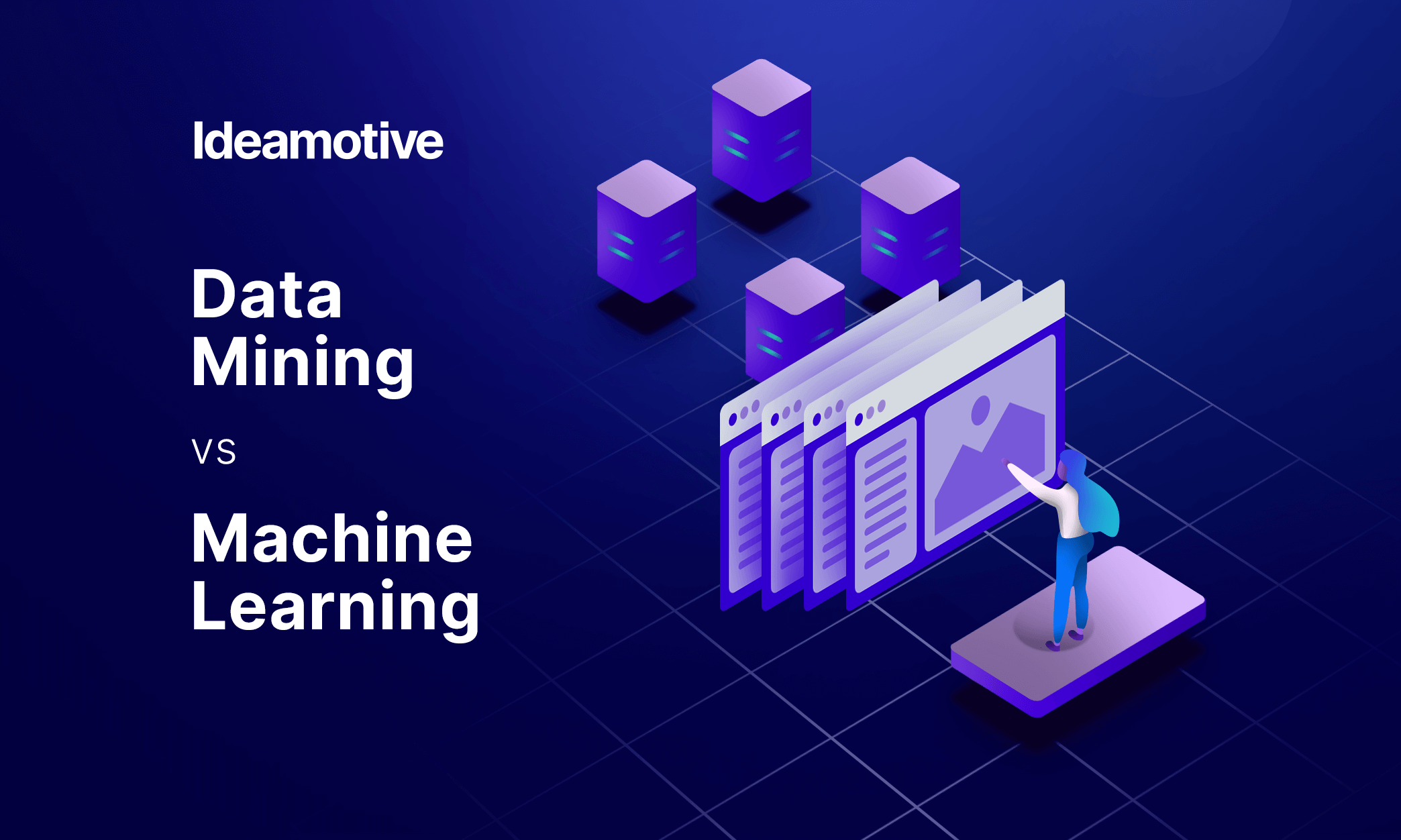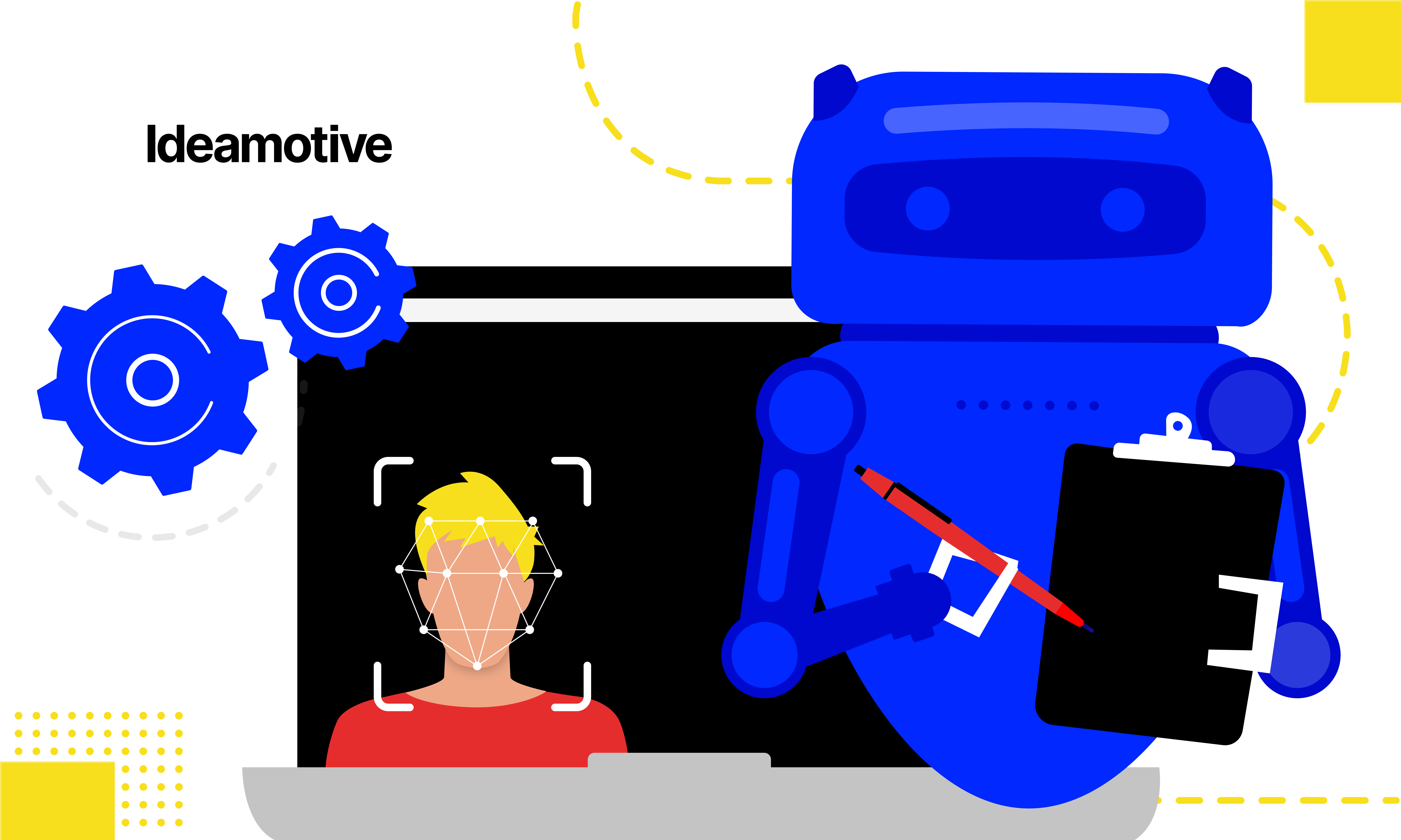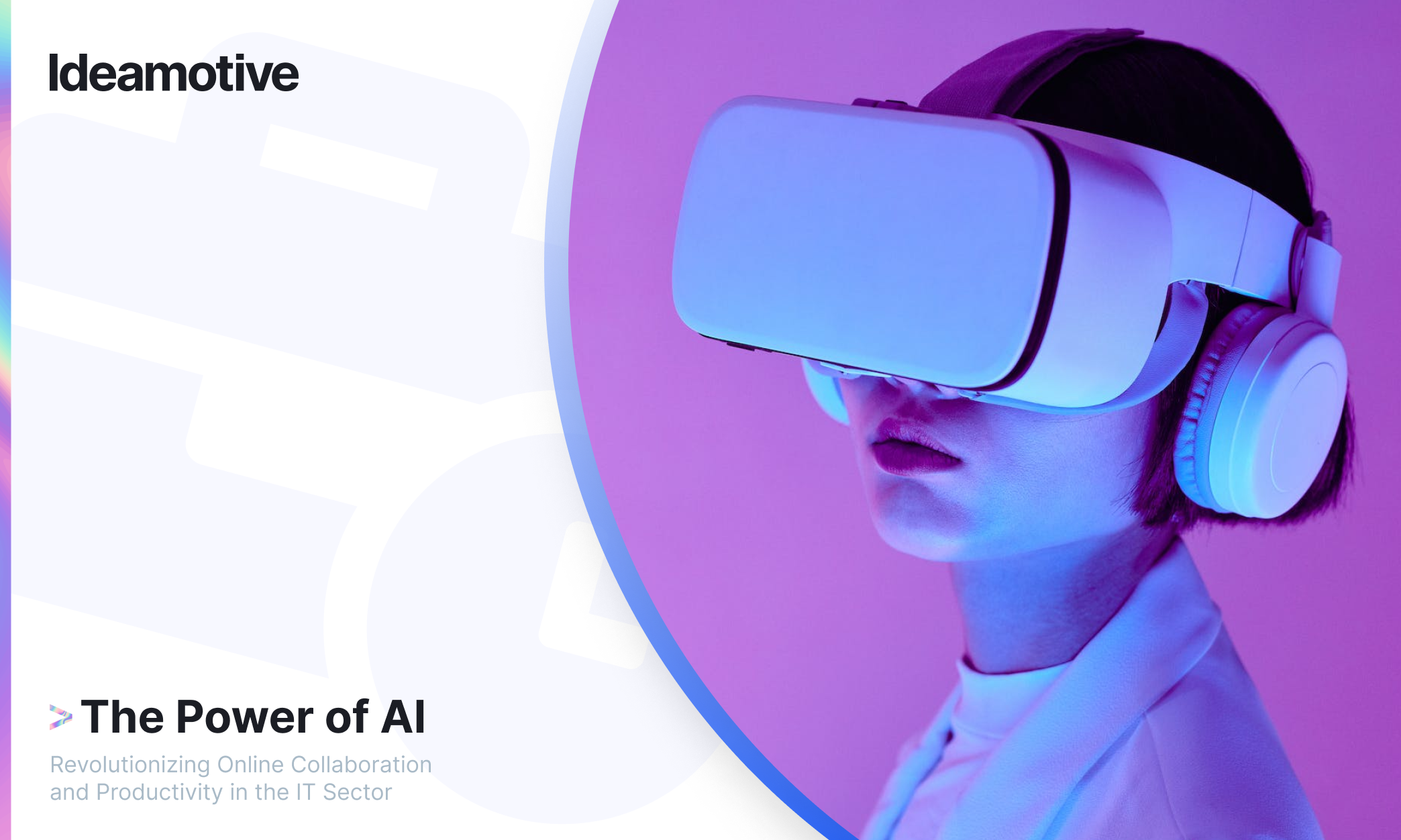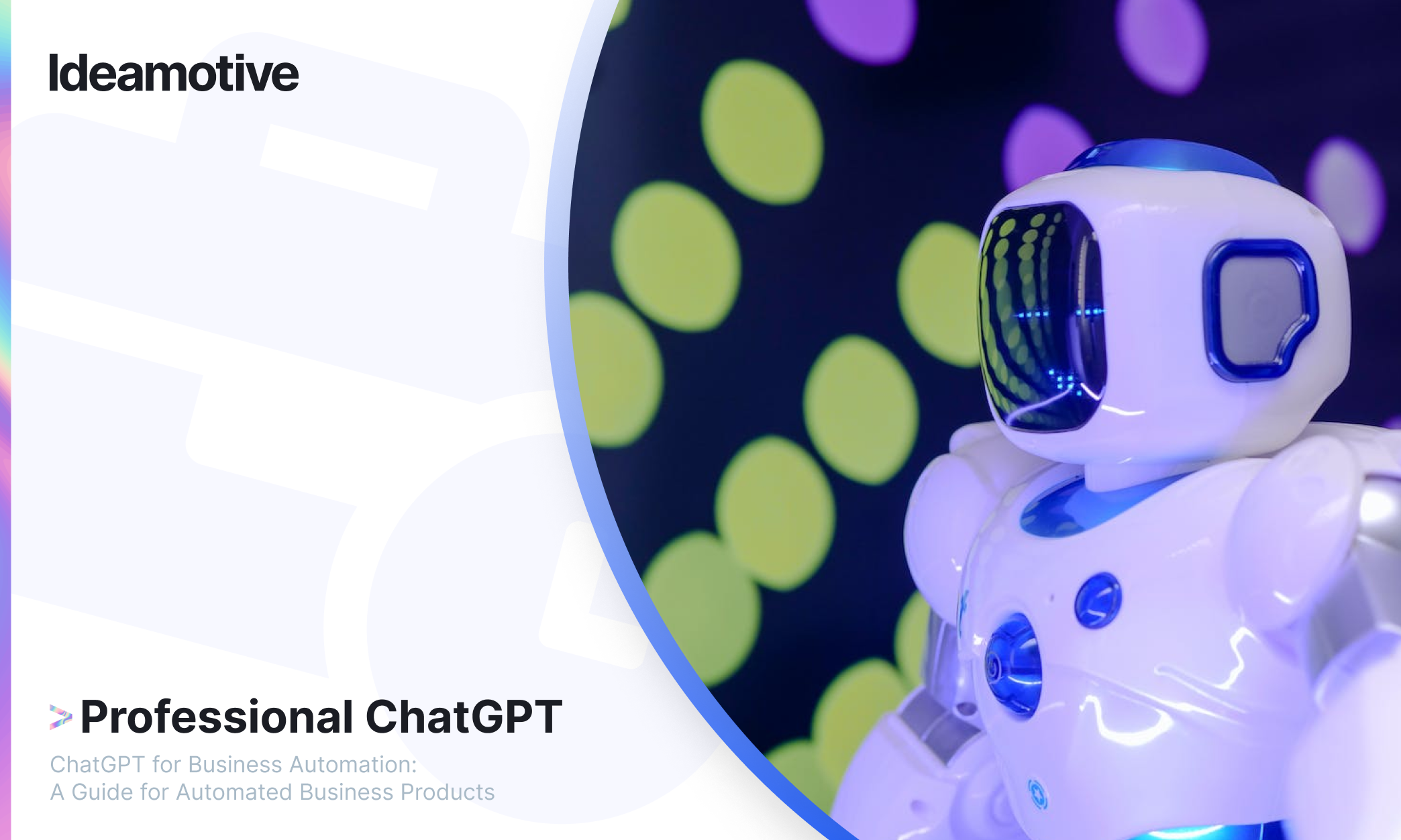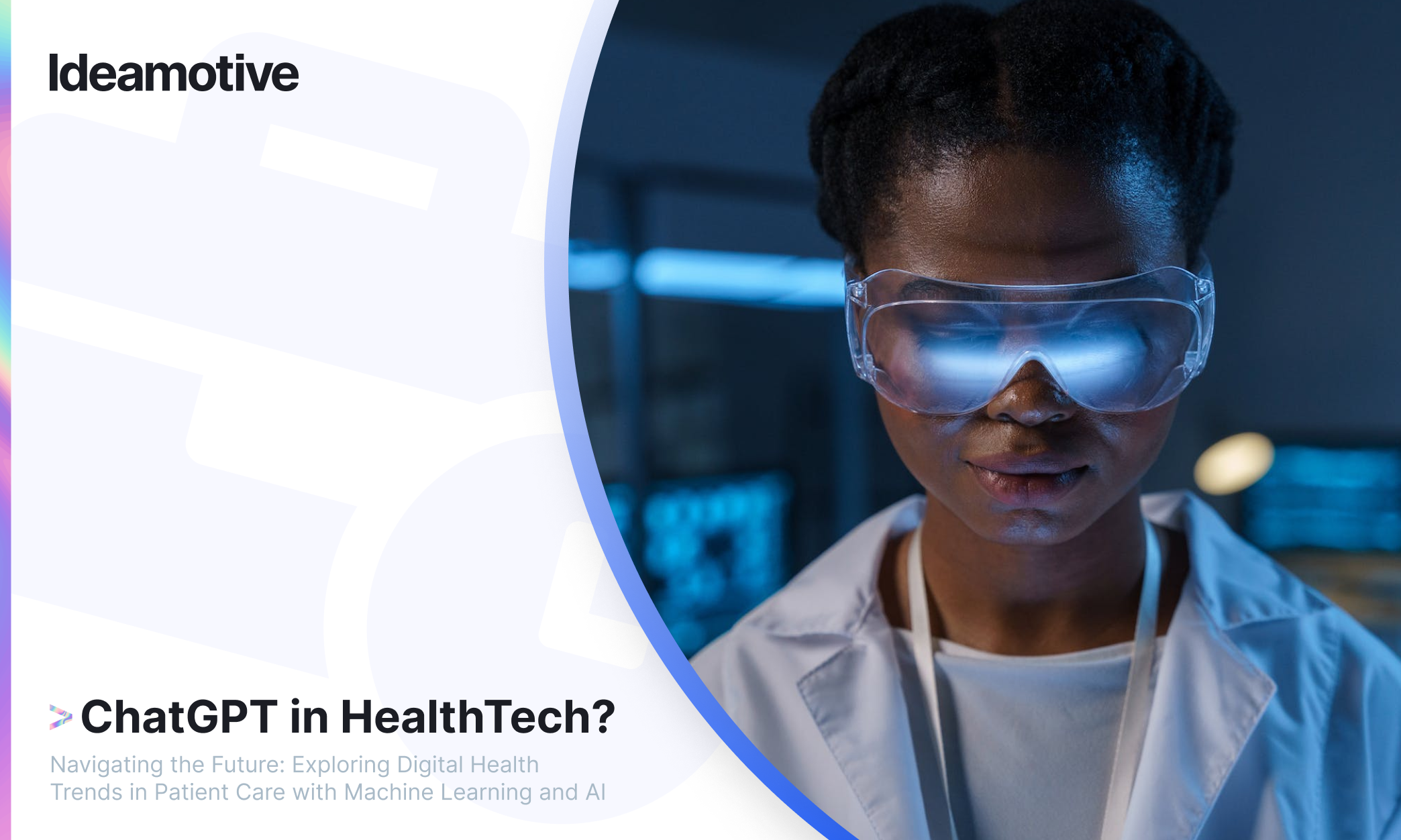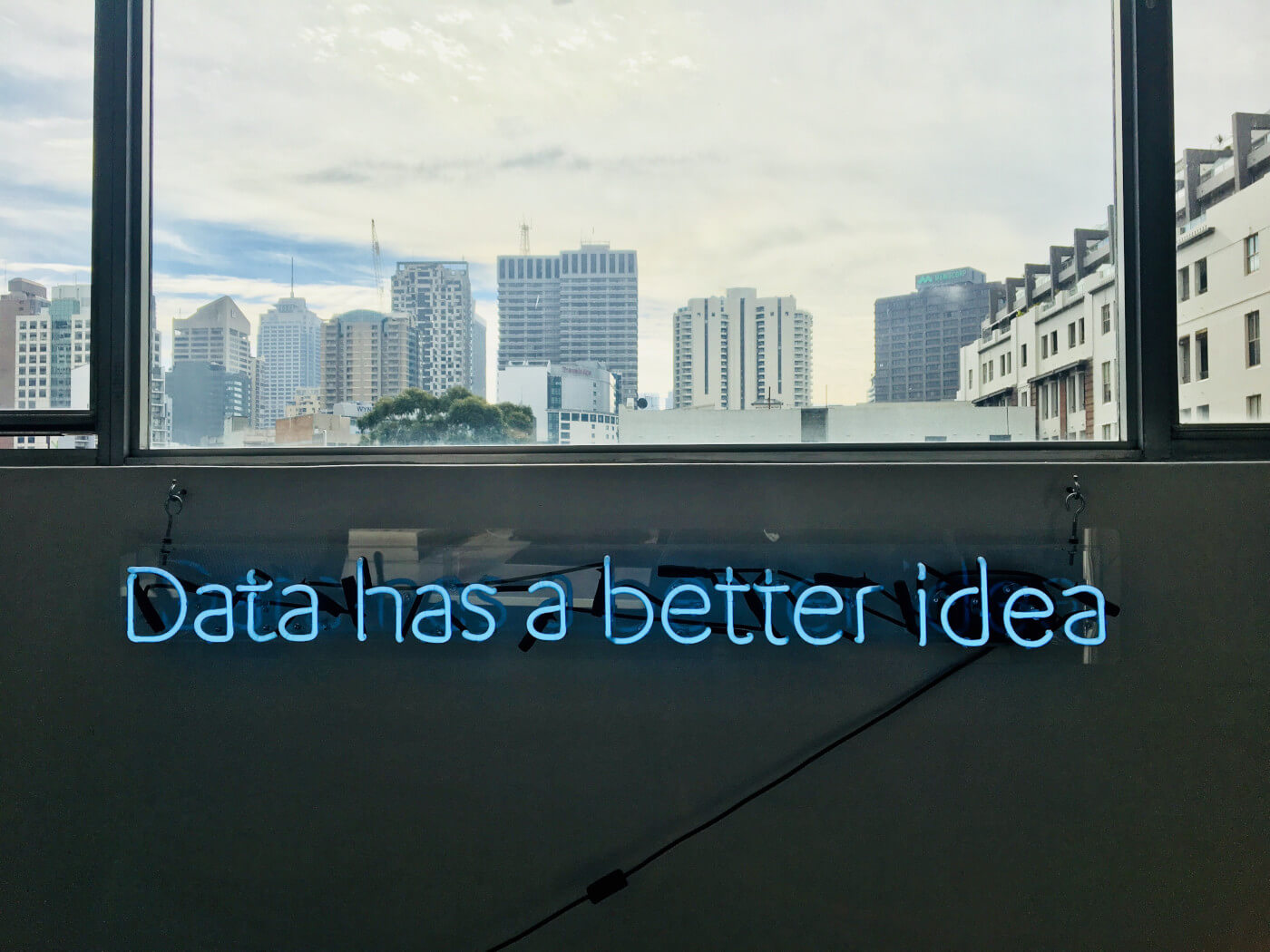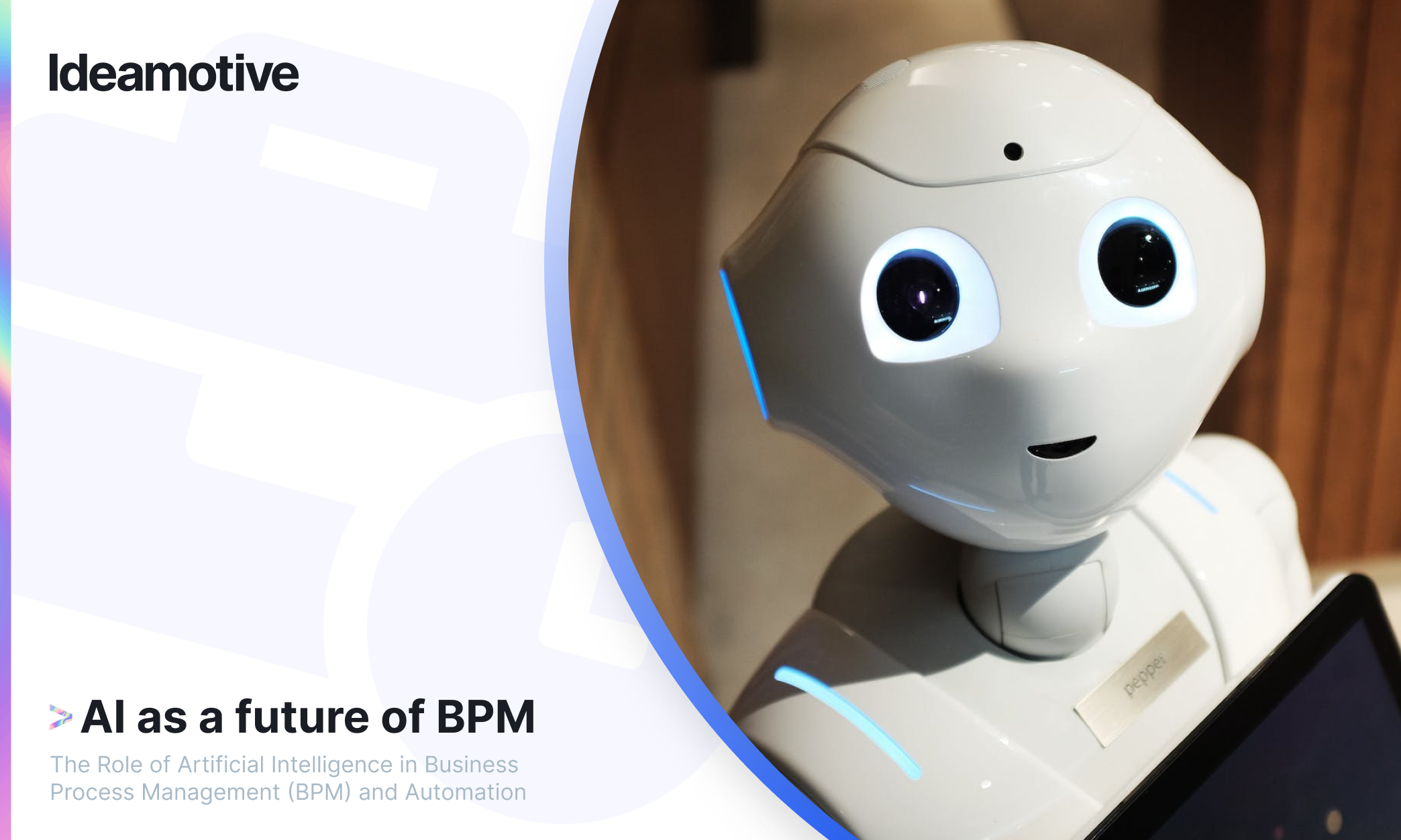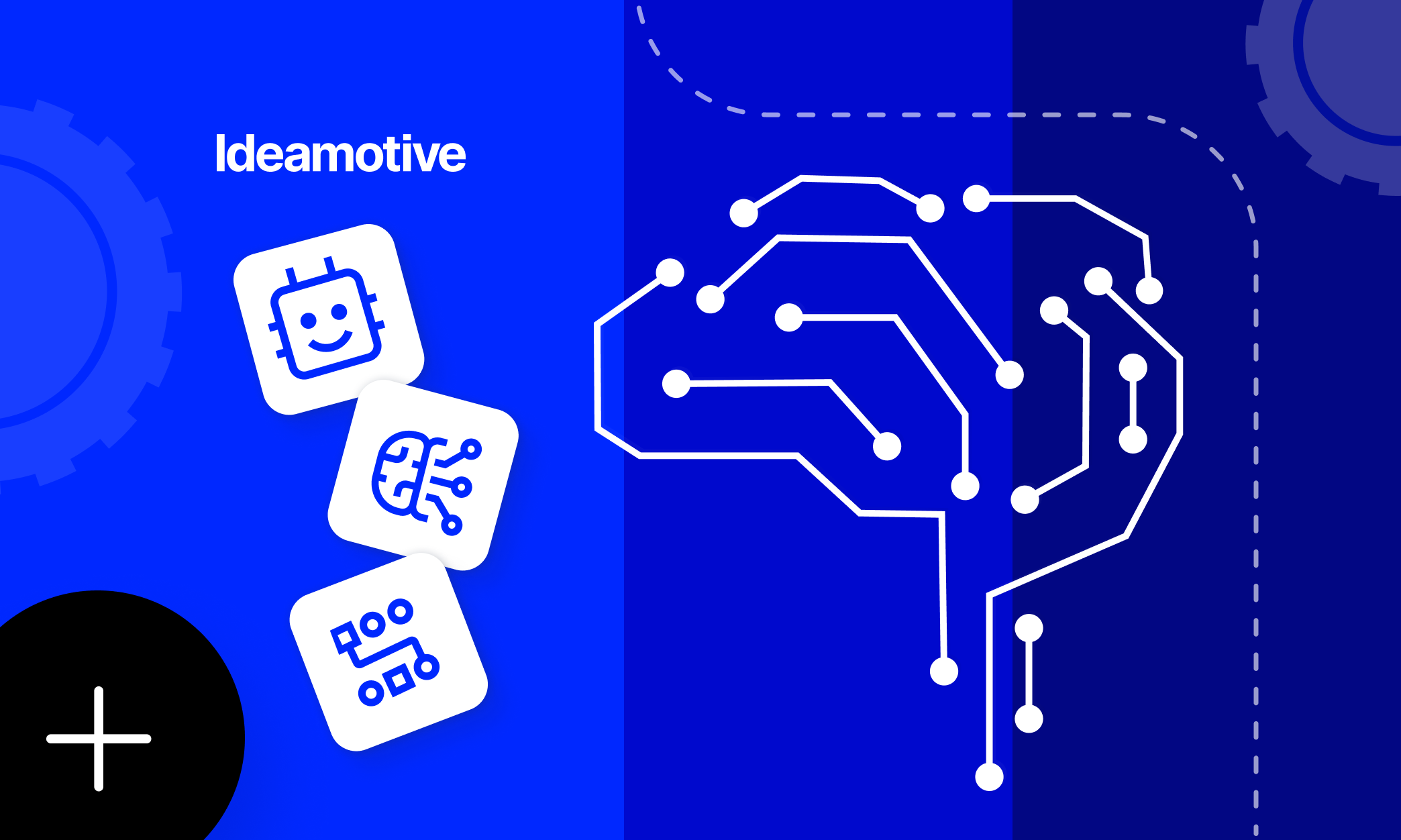Implementing Artificial Intelligence In Your Business
The No-Fail Guide For Entrepreneurs And Product Owners
Artificial Intelligence seems to be on everyone’s lips. Because of the term’s ubiquity, it’s easy to downplay it as a buzzword. In reality, the concept has been around at least since the ‘50s, so it’s hardly a novel trend.
Artificial Intelligence seems to be on everyone’s lips. Because of the term’s ubiquity, it’s easy to downplay it as a buzzword. In reality, the concept has been around at least since the ‘50s, so it’s hardly a novel trend.
A confluence of technology advances in the fields of artificial neural networks, statistical algorithms, computing power, and data analysis has impelled the AI growth on an unprecedented scale. AI is speeding up exponentially, and commercial companies can no longer ignore its underlying potential (and, possibly, certain threats involved).
The technology can deliver a substantial qualitative change to business organizations, and create new opportunities for company growth. Major corporations have already started investing in its adoption, but many startups and SMEs are slow to act.
Because we believe it’s high time for business, startups, and SMEs included, to embrace AI, we have created this no-fail guide to Artificial Intelligence. It takes a pragmatic approach to explain AI and related technologies and explore how they can be applied by virtually any business today.
Using plain, non-technical language, we clear up the confusion between AI, Machine Learning, and Deep Learning, and take you on a tour through AI applications in various industries. Our guide covers the basics of Artificial Intelligence, explains why AI is such a significant trend today and provides plenty of real-life examples to inspire your company to adopt Artificial Intelligence and Machine Learning solutions.
Read this guide if:
You are considering AI deployment in your company but don’t know where to start.
You understand the technology but aren’t sure how it can help a business like yours.
You heard that Artificial Intelligence is driving business change but would like to see some practical examples.
You are planning to build an AI-powered startup.
You don’t know anything about AI.
Are you new to AI? Perhaps you need a bit of a refresher? Either way, this guide provides all the information needed to understand Artificial Intelligence solutions for business and apply them in your company.
By clicking “Get the e-book” you consent to processing your data by Ideamotive Sp. z o. o. for marketing purposes, including email marketing.
Let’s get started!
.png)
Thinking about implementing AI solutions in your business?
Talk to one of our industry advisors. We'll audit your current situation, build an implementation roadmap and put together an A-class AI development team.
Table of Contents
01 Introduction to AI and Machine Learning
From the business perspective, AI and Machine Learning may not be as complex as they seem, but we cannot dive deep into the topic without understanding core notions and ideas. Before we head off to discussing AI applications in business, let’s get some terminology straight.
What is Artificial Intelligence?
AI, or Artificial Intelligence, is a field of computer science that focuses on the creation of intelligent machines that can “think,” react, and solve problems just like humans. In order for those machines to act with intelligence, they must first be provided with abundant information about the surrounding world to build their knowledge based on input and experience.
The term “Artificial Intelligence” was coined in 1956 when scientists started exploring how to use computers to solve problems, but it was really in the early 2000s when the development of this field picked up the pace. By now, AI has become an integral part of modern technology.
Popular examples of AI include intelligent chess players, autonomous vehicles, or voice-activated personal assistants. However, AI-powered solutions are primarily used by businesses across a wide spectrum of industries to automate and streamline task execution, deliver enhanced customer service, and increase operational efficiency.
47% of mobile-mature organizations have an AI strategy in place.
What is Machine Learning?
Artificial Intelligence is closely-tied to Machine Learning, or ML. Machine Learning is a method that uses computer algorithms and statistical models to train machines on how to learn. It is a subset of AI that looks into complex data patterns to conclude, make predictions, and build up knowledge.
ML models aren’t explicitly told by humans what to do and how to do it through programming. Instead, it’s enough to provide them examples to analyze and compare, and they can figure out what to do with this information on their own.
In principle, Machine Learning resembles the process of acquiring knowledge by humans. Imagine a small child that is learning how to speak. It collects information from the surrounding environment, processes it in its brain and when the right time comes, produces a set of meaningful sounds of its own. ML works similarly. A machine gathers data inputs, breaks down, and transforms them to deliver an intelligent output.
49% of global enterprises are exploring ML, 36% describe themselves as early adopters, and 15% call their use of ML ‘sophisticated’.
Types of ML Algorithms
Machine Learning leans through the use of algorithms, which can differ depending on the goal of learning, data input and outputs, methods used, and other factors.
There are various types of these ML algorithms, three of which are particularly widely adopted:
Supervised learning
In supervised learning, machines learn from labeled data sets. They take them as input, detect patterns, and then autonomously label further data. They also receive the “right answers,” so the expected output, to understand what’s the best solution to a problem.
Supervised learning is often used in visual recognition systems, handwriting to text converters, inbox filtering mechanisms, or speech automation solutions.
Depending on what we are trying to predict through supervised learning, it can be applied to solve two types of problems: classification or regression.
Classification
Classification refers to determining to which set of categories a given entity belongs. In Machine Learning, classification is the process of predicting the class of a given data item based on a training set of data containing instances. Classification algorithms are used when the outputs are restricted to a limited set of values
A simple example of a commonly-used classification algorithm (or a classifier) is an AI-powered spam-detecting tool with two outputs (spam/not-spam). It first consumes multiple email samples belonging to either “safe” or “harmful” class. Based on their shared and distinctive characteristics, the system learns how to classify each message as spam or no-spam. Then, it processes new incoming messages and labels them accordingly, depending on the assumed classification criteria.
Regression
Regression is a method used to predict a continuous output value based on one or more input variables.
Regression algorithms may take any value within a range. They are mostly used for predicting and pinpointing the cause and effect relationship between inputs and figuring out values of such entities as temperature, age, or price.
Unsupervised learning
In this pattern, data isn’t labeled or sorted. Machines act with no guidance and group information according to similarities and discrepancies, trying to learn “on their own.”
Unsupervised learning tries to solve problems through clustering or association. Chatbots commonly use these algorithms. So do self-driving vehicles, face recognition software, and expert systems.
Reinforcement learning
In reinforcement learning, algorithms learn by trial and error and choose the solution that yields the best results. This approach is frequently applied in robotics, navigation, chemistry (to optimize chemical reactions), and gaming. It can be used with methods such as classification, regression, and prediction.
Machine Learning Models
Models, so abstract representations of the problem we’re trying to solve by the use of algorithms, are another element crucial to perform Machine Learning computations. Again, various types of ML models are known. We will have a quick look at a few basic ones.
Algorithm or model? What’s the difference?
In simple terms, an algorithm is a sequence of steps or procedures followed to obtain a result or solve a problem (a script).
A model is an artifact built by using an algorithm, which requires input to return an output, according to the algorithm it follows.
Decision Tree
It’s probably the most familiar model of all that covers both, classification and regression models, in the form of a flowchart-like tree structure. It is drawn upside-down, starting from the root and then branching out. Each node represents a problem or a test, and each branch stands for a possible outcome. This model is usually employed in the ML context for decision-making.
You can find more information about the decision tree here.
Artificial Neural Networks
Artificial Neural Networks (ANN) are computing systems inspired by the neural network in animal and human brains. They consist of a collection of connected units or nodes called "artificial neurons," which communicate with each other just like the synapses, by sending signals to convey information. Typically, those neurons are organized into layers, each of which performs a different kind of transformation on the input.
The original assumption behind this model was to solve problems in a similar way as our brains do it. Currently, ANN has multiple applications, including computer vision, speech recognition, machine translation, gaming, or social network filtering.
A detailed explanation of how artificial neural networks work can be found on this site.
Bayesian Network
Another popular model is a Bayesian Network, a graphical method of representing a set of variables and their conditional dependencies. It is used to compute the probability of occurrence of an event based on a sequence of variables in such applications as anomaly detection, diagnostics, decision making, or reasoning.
To learn more about the Bayesian Network method, check out this presentation.
What is Deep Learning?
When researching AI and ML, you can also come across another term, Deep Learning. It is a subset of Machine Learning that uses artificial neural networks to imitate how the human brain works to acquire and retrieve knowledge. These algorithms are capable of learning unsupervised from unlabeled, unstructured data by performing a task repeatedly, each time enhancing the process to improve the result.
Deep learning models are at the center of some of the most progressive technologies, such as self-driving cars, cancer detection, and advanced machine language translation.
What is GAN?
One more notion that you may stumble upon when researching AI and ML is GAN or Generative Adversarial Networks. They are a class of Machine Learning, and quite a recent concept, which came to light in 2014.
Generative Adversarial Networks belong to the set of generative models. This means they learn unsupervised by analyzing the input and discovering regularities and patterns and produce their own content that bears similar characteristics to the original training data sets.
GAN learn by simulating a game between two players (or adversaries), one of which generates data samples that resemble the underlying training set. Generates is the keyword here, as the network does not simply copy the original but creates the most truthful version of it from scratch, following the rules established so far.
The second player tries to recognize which samples belong to the training set, and which were forged by the adversary. By playing “the game,” both sides continuously improve their skills. The forger is creating more authentic reproductions, and its adversary is getting better at detecting them.
Due to their ability to create new information based on the existing intelligence, GANs are deemed to be one of the most promising ML technologies with a wide range of current applications including 3D modeling, interior design, gaming, and fashion.
AI vs. Machine Learning vs. Deep Learning
The three terms are closely related and often confused. Let’s wrap up what we have discussed so far to make the distinction between them crystal-clear.
| Artificial Intelligence | Machine Learning | Deep Learning |
| Artificial intelligence (AI) is a field of computer science that focuses on the simulation of human intelligence processes (such as learning, reasoning, or self-correction) by machines. | Machine Learning is an application of Artificial Intelligence , based on the premise that systems can learn from data on their own, and require minimum human effort to do it. | Deep Learning belongs to a group of Machine Learning methods, and it’s a specific approach used for building and training neural networks to learn and generate outputs unsupervised. |
02 Why AI Matters?
Ten years ago, many of the AI-powered solutions that are commonplace today still seemed to belong to the “Star Wars” realm. But a decade in human years is an entire era in technology and software development, and Artificial Intelligence is no longer a futuristic, unreal concept. Instead, it is disrupting all industries, doing more than ever to make our lives easier.
PwC expects AI to contribute up to $15.7 trillion to the global economy in 2030, more than the current output of China and India combined.
AI touches almost every aspect of our lives, often without even being noticed. According to TechJury, 77% of the world’s population uses an AI-powered device or service, with only one-third of users being aware of this. Think about voice assistants such as Siri or Bixby, chatbots that talk to you on an e-commerce website, or personalized Netflix recommendations. 80% of Netflix users stream content suggested by its personalized recommendation algorithm! They all are examples of AI-powered solutions we interact with daily, without realizing their complexity and ingenuity.
AI-powered Mobile Apps
With over 5.19 billion unique mobile users globally, the mobile app market is thriving, expected to see $777.4 billion in revenue by 2032, In such a dynamic industry, innovations occur in the blink of an eye. Therefore, it’s no surprise that mobile is one of the chief areas of expansion for Artificial Intelligence.
Mobile application development has found its sweet spot with AI, as the technology delivers unprecedented user personalization and tailoring possibilities. By extending advanced data collection and analysis capabilities, AI allows businesses to gather crucial information about customers and use them to offer highly contextualized, unique brand interactions that increase customer experience and boost engagement.
Mobile App Bots
Chatbots are the first AI application in mobile apps that instantly pops into our minds. They have become quite the norm in online customer services, ensuring 24/7 service, and instantly resolving customer issues.
By no means did chatbot popularity reach its climax. According to Gartner, Inc., by 2027, a quarter of organisations would use chatbots as their main method of customer service. If that’s to be confirmed, integrating AI into mobile apps will become a necessity for companies who wish to thrive (and survive).
Virtual Mobile Assistants
Another common application for AI on mobile is mobile assistants. There are tons of options in this space, which is why it’s easy to take those apps for granted; in reality, they are highly-complex technologies that involve the collection of massive amounts of data, which then feeds into AI solutions.
Virtual assistants merge speech and image recognition, natural language processing, Machine Learning, and other Artificial Intelligence components and employ sophisticated algorithms to continuously improve user experience based on the information collected from each interaction.
Beyond Chatbots and Mobile Assistants
Chatbots and personal assistants are the prevailing but not the sole applications for AI in mobile development. Other fields within mobile apps development where Artificial Intelligence makes an impact include content curation, language learning, photo storing and editing, productivity, and many, many more.
AI in Web Development
AI continues to make a sizeable impact on web development. The fields of its applications here are very much alike in mobile, covering chatbots, voice-based search, and AI-infused user experience optimization. Those technologies can be used across many industries to facilitate the buyer's journey, enhance access to products and services, and improve customer intelligence through the website.
By providing web designers with real-time understanding of user interactions, AI algorithms can help them improve user experience on the web and tweak the design to better match user preferences.
Personalization is the Holy Grail of positive user experience, and it also embraces website design. AI and data science deliver in-depth analysis of user behavior, preferences, and feedback to help brands increase engagement through highly-personalized websites.
80% of consumers are more likely to do business with a company offering personalized services.
Examples of Artificial Intelligence impact on web design include tools such as heat maps that trace the viewer’s eye and clicks to spot attention leaks and identify the best-performing design facets. Layout exploration engines are another instance; they create analytics-based suggestions on website layouts that are most likely to attract and engage visitors.
Attempts are also being made to deliver fully AI-powered, self-contained web design platforms that create websites within a few minutes, with no human intervention. However, these products have so far proven inefficient and fault-ridden, and still, have a long way to go before they supplant web designers and developers. For now, an efficient web design process still requires the fusion of AI personalization capabilities and software development team’s creativity and skills.
AI Tools Like Chat GPT
AI tools like ChatGPT have emerged as breakthrough solutions that exemplify the potential of artificial intelligence. Powered by advanced language models, Open AI ChatGPT transcends traditional boundaries by enabling natural and dynamic human-machine interactions.
With the ability to understand context, generate coherent text, and adapt its responses based on user input, ChatGPT has found applications in a wide range of fields, from customer support and content creation to brainstorming and learning support.
By democratizing access to sophisticated natural language processing capabilities, AI tools like ChatGPT have opened new avenues for innovation, efficiency, and creativity across industries, reshaping the way we engage with technology and harnessing the power of AI to augment human capabilities.
The State of AI in 2023
Artificial Intelligence, together with Machine Learning, Deep Learning, neural algorithms, and other related innovations, is our reality. The technology presents an immense potential to benefit our lives, whether we realize it (and accept it) or not.
-
AI is forecast to grow into a $118.6 billion industry by 2025. (Tractica)
-
75% of businesses say AI will allow them to move to new ventures and other businesses. (Forbes)
-
84% of companies say AI will allow them to gain a competitive advantage. (BCG)
-
51% of executives say their AI goal is to enhance the functions, features, and performance of their products. (AIMultiple)
Some common applications of AI that we see today include automated customer support and personalized shopping experience, AI-enabled healthcare, enhancements in the automotive industry, smart home and entertainment, security and surveillance, and social media.
We are expanding on these and more instances in Section 7. Outstanding Examples of AI Implementation.
Areas with the highest expected cumulative global AI revenue include static image recognition, classification and tagging, performance improvement in algorithmic trading, scalable processing of medical data, and predictive maintenance. Shortly, Artificial Intelligence is expected to make inroads in language learning, analysis and translation, gaming, robotics, media, and education.
To see how different industries can take advantage of AI and related concepts, go to Section 5. Top Industries Being Disrupted By AI.
To learn about general business benefits of Artificial Intelligence solutions, jump to Section 6. Benefits of Artificial Intelligence in Business.
As AI advances, we are witnessing its growing commercialization and adoption across all industries. Regardless of the field of operation, all businesses can derive immense value from incorporating AI solutions. The ones who leverage on that trend first are going to leave everyone else standing.
Would you like to find out more about what’s coming and going for AI in the foreseeable future? Here are a few articles and resources that you can explore:
03 The Economy of AI Solutions
This question had to pop up at some point: ‘OK, but how much will AI implementation cost my business?’ The simple answer is that there’s no simple answer.
Obtaining a rapid and precise cost evaluation is extremely difficult; each case has to be considered individually. However, gaining a general understanding of how an AI implementation looks like and what price factors are involved in it may help you make a rough estimate of its costs.
Why Evaluating AI Implementation Costs Is Hard?
An estimate of an AI or ML project factors in multiple aspects influencing the time of delivery and the final price. An AI project involves several complex stages from ideation and analysis, through prototype, evaluation, and MVP, to product release. Each of them requires a contribution from a team of business problem owners, product managers, data scientists, and highly-skilled software development engineers and QA specialists.
To assess the total cost of the implementation, you need to search for answers to the following essential questions. This will help you get a more realistic scope of the project and come up with a ballpark figure.
-
What data is available? Data is a critical price factor for AI implementation, and its quality and quantity heavily determine the duration and cost of a project. The better data quality, the more efficient the final solution, which may positively impact the final cost.
-
What roles do you need for the project? AI and ML-based projects are unique because of the specific skillset involved. Identifying core AI talent needed for the development and estimating each person’s effort and cost of labor will allow you to calculate most of the budget required for the implementation.
-
Which AI skills are available in-house? Global giants like Google and Facebook run massive departments researching and developing AI solutions day by day. Other companies usually cannot afford to maintain a robust team of AI experts working on a single project at full capacity. However, this doesn’t mean they don’t have any data scientists or statisticians at their disposal. Benchmarking the current state of AI knowledge and experience within the company is a good way to start thinking about the total costs of project implementation.
-
Which existing tools and solutions can you leverage? Building new learning models for ambitious AI projects such as supply chain optimization or augmented reality requires a vast amount of money. Fortunately, the immense investment in AI innovation has resulted in the development of state-of-the-art, battle-tested models that can serve as the foundation for the creation of lower-scale, advanced AI solutions that don’t cost the earth.
-
What is the expected output? To fully understand project complexity and anticipate possible stumbling blocks, you have to define your expectations as to the desired outcome. What should be the clearly-defined goal of the implementation? What level of accuracy will be acceptable? The more questions you ask and answer at this point, the more precise the evaluation.
How Much Does a Medium-sized AI Project Cost?
Artificial Intelligence is not a “usual” programming use case. Even in organizations that employ very advanced IT technologies but have no prior experience with Artificial Intelligence or Machine Learning infrastructures, evaluating the cost of implementation can be tricky. To make this process less vague, and give you at least an idea of what price ranges to consider, we are sharing the costs of several medium-sized AI/ML implementations.
These examples should make it easier for you to understand what price categories your own implementation could fall in:
-
Facebook bot for scheduling house viewings and real estate appointments – $12-15K plus a software subscription fee of $400-800 a month.
-
A document sorting system – between $20-30K. The length of implementation – approximately three months.
-
Official Facebook chatbot for a leading clothing brand – $50-60K for a custom implementation.
-
Data analytics software for tracking people’s location in-store – $50-80K for a project spanning 3-4 months.
-
AI-powered partner search platform (similar to Tinder) – between $20K to $100K, depending on the implemented features and add-ons.
-
An insurance fraud detection tool for a bank – $100-200K; implementation from scratch.
Calculating the Cost of AI Implementation
From the project management perspective, developing an AI solution, be it a simple chatbot to support your e-commerce store, or a refined Machine Learning algorithm empowering your sales strategy-making, consists of roughly the same stages as any other software development project, starting with pre-development stage, proceeding to the actual development, and leading to the product launch and post-development maintenance. The total bill for implementation depends on the scope and efficiency of work performed at each of these stages. Below you’ll find an example mapping of a small to medium AI project. It reflects, for instance, the development cycle of a simple conversational chatbot, a basic text analysis engine that accelerates and streamlines mundane admin tasks, or a simple AI solution for customer feedback analysis.
This is just a basic overview of an AI project flow. To get a more elaborate picture of the entire process, see Section 8. How to Build an AI Solution.
Pre-development – 4-12 weeks
The pre-development stage usually lasts a few months, and it’s one of the most complex phases of the entire AI project development lifecycle. It involves problem identification, feasibility study, ideation, data audit and preparation, and ends with a Proof of Concept. Of these, the feasibility study and Proof of Concept are usually the longest and most cost-intensive. They consume about 80% of the total pre-development time (and budget).
To go from an idea to a viable PoC, you should build a team of 4-6 people comprising at least one project manager, 2-3 AI experts, and 1-2 IT architects.
Development – 3 months and beyond
Small to medium AI projects usually require a team of one of two AI experts, several data scientists, and a few developers who may work on the implementation of the solution from a few weeks to 6-7 months.
Post-development – Continuous
The post-development stage of an AI project involves continuous support, maintenance, and updating of the developed solution, for example, as data sets evolve.
Is AI Worth It?
Thanks to the increasing application of Artificial Intelligence and Machine Learning and the emergence of various tools and platforms, AI development is becoming more available to all businesses, and the costs of implementation are decreasing. From a business perspective, multiple reasons justify investment in AI.
In North America, the economic gains from AI are expected to reach $3.7 trillion or 14.5% of GDP growth by 2030.
The existing Artificial Intelligence and Machine Learning technologies help businesses dramatically reduce operating costs by:
-
eliminating costly errors that can stall manufacturing or affect sales;
-
accelerating and enhancing decision-making;
-
streamlining operations and management;
-
increasing product quality;
-
improving manufacturing productivity;
-
boosting employee efficiency.
From a broader perspective, these efficiencies generate multi-million dollar savings across all verticals. Leveraging some of these capabilities allowed Netflix to save over $1 billion with its Machine Learning-based personalized recommendation engine. According to Deloitte, within the next few years, up to $37 billion can be saved annually by the US federal government with 1.1 billion hours freed up thanks to AI. In retail, the AI implementation across logistics, supply chain, procurement, and other sectors, can bring the compound savings of almost $400 billion. AI is also generating savings in healthcare. Accenture forecasts that by 2026, robot-assisted surgery will save the US healthcare system $40 billion each year.
What’s AI Consulting and Why You May Need It?
AI presents a massive opportunity for organizations to improve their business and tap new revenue streams. However, it’s also an extremely intricate, multi-faceted technology, which, if implemented wrong, may incur astronomical costs without bringing any value to the table.
Seeing AI and Machine Learning saving potential, large companies are now using these technologies routinely in their products and services. But most companies don’t have the assets to create an internal AI team to research and develop Artificial Intelligence and Machine Learning solutions and handle their use cases. Fortunately, they don’t need to.
By retaining expert AI solutions development teams, businesses across all industry verticals may bring their AI ideas to fruition and make predictive algorithms, deep learning mechanisms, and data analysis patterns work for them.
The engagement with an AI consulting team typically starts with research and ideation. The consultants’ goal is to understand the client’s requirements, strategy, and challenges, and assess the company’s current resources that might be leveraged in the AI project. Several use cases are developed as a result.
The next phase is implementation. The consultant’s team relies on its profound knowledge of AI and experience in IT project delivery to provide a complete AI solution lifecycle from start to end, or within the scope required by the Client. The implementation stage involves technology selection, vendor selection, project management and development, software engineering and Quality Assurance, and so on. The outcome should be functional prototypes and algorithms that can go to production once validated and approved.
After the AI project has been successfully deployed, the consulting company can offer its support in the continued maintenance and enhancement of the resulting solution. It may also deliver training to ensure your employees are capable of working with the solution and feel at ease doing it.
To read more about the time, cost, and resources involved in a typical AI project go to Section 8. How to Build an AI Solution.
Takeaway
As you can see, there’s no single answer to the question about AI implementation costs. Estimating the effort required for the delivery of an enterprise software development project is always challenging. Weaving in Artificial Intelligence and Machine Learning into the process makes it even more difficult.
However, thanks to the fast advancement of technology, you can considerably bring down the final bill by leveraging existing algorithms and models, using open source solutions, and engaging experienced AI teams to deliver your project on-demand in the most cost-efficient way.
Also, think about the big picture. Investing in AI offers tangible, quantifiable benefits, while shunning from innovation can bring about a series of grave implications to your business. So if you don’t want to be the one to miss the AI opportunity bandwagon, take some time to consider the best applications of AI in your business.
Head on to Section 5. Top Industries Being Disrupted By AI for inspiration.
And if you need a hand with cost appraisal, we can help you crunch numbers and find the most cost-effective solution.
04 AI Solutions You Can Implement Today
Before we delve into how Artificial Intelligence solutions can empower particular industries, let’s review several examples of AI applications that are already in common use today. Modern businesses harness these solutions to optimize business processes, gain a competitive advantage, and lift ROI.
AI-based Recommendation Engines
AI-driven product recommendation engines are one of the most popular existing applications of machine intelligence in retail and e-commerce. They help companies anticipate consumer behavior to offer personalized recommendations and boost revenue through upselling and cross-selling. As Salesforce has found out, recommendation engines drive 24% more site visits and 26% greater revenue, lead to repeat visits, and increase average order value by over 10%.
These solutions utilize algorithms gathering historical data such as past purchases, product search, customer demographics, and build recommendations to suggest each client “things they may also like,” and propel higher sales. They also make use of content-based filtering and collaborative filtering. The first method takes into consideration keywords typed by customers when searching for products online; the second makes shopping predictions based on customer behavior and preferences.
(Chat)bots
It’s virtually impossible to be using the Internet today without ever bumping into a chatbot. Bots have infiltrated the enterprise sector. Savvy companies leverage open frameworks such as Google Dialogflow or Motion.ai to build their own chatbot solutions and tap the opportunities from an additional channel of proactive customer engagement.
While AI-powered bots are usually associated with conversational marketing, they can also become useful in performing routine tasks. Intelligent bots can support humans by scheduling appointments, sending notifications and reminders, handling travel bookings, or conducting basic employee training.
By 2023, bots are projected to generate approximately $11 billion in annual cost savings across the retail, banking, and healthcare sectors.
The problem with chatbots
Chatbots power interactions on various levels of customer engagement with companies. But even though their application is becoming more sophisticated every day, the logic that underlies bot communication capabilities still needs to be improved.
Chatbot technology delivers great value when it comes to basic interactions involving a scripted flow of questions and answers. However, bots still struggle with delivering sterling customer experience in more advanced conversations.
Chatbots continue to underperform when faced with the following conversational situations:
-
complex requests,
-
the nuances of human communication (jokes, context, emotional markers),
-
sophisticated commands,
-
foreign accents,
-
providing detailed, precise information.
Because of these challenges, developing a reliable, sophisticated conversational bot requires not only the selection of the right chatbot creation platform but also involves in-depth AI knowledge and IT project management expertise.
If you would like to upgrade your services with an AI-powered bot but lack those ingredients, consider retaining a reputable software development team who will evaluate your requirements and suggest a solution that will deliver on your expectations.
Business Process AI Automation
Another high-impact area for the usage of machine intelligence in business is the optimization of business process automation (BPA). This application refers to the automation of recurring business processes that allows companies to save time, improve services, and make employees more productive. Whatever process we speak of, we can automate it by leveraging AI and ML mechanisms, as long as it consists of a sequence of repetitive, predictable steps.
Let’s consider handling customer complaints as an example. By extending AI and Machine Learning capabilities, BPA solutions can log all support tickets in a ticketing system, perform text analysis to recognize customer sentiment, prioritize tickets based on a filter that attributes different values dependent on customer emotions, and finally notify human agents about complaints that need to be dealt with immediately.
Existing Artificial Intelligence solutions also help companies facilitate and streamline employee onboarding. For example, an AI-based system can take care of the delivery and receipt of required documentation (it may send a list of mandatory documents, check if all files have been provided, skim through the documentation to verify if all data is complete, etc.). It may also point new employees to the company policies and regulations, and suggest relevant training they have to go through as they join. Solutions powered by Machine Learning and AI can also address some frequently asked questions that the new employees may have.
Other examples of Business Process AI Automation include:
-
Customer onboarding
-
Data update and migration
-
Report generation
-
Issuing invoices
-
Claims collection
-
CRM updates
-
Generating billing data
-
First-line support
-
Software installations
-
Automated testing and diagnostics
-
Payment reconciliation
User Behavior Prediction
Imagine if you knew exactly what your customers are up to and could use that knowledge to target leads that are most likely to buy with the tailored offering. AI gives you that power. Anticipating user behavior with predictive algorithms enables brands to bring a personal touch to interactions with their customers and anticipate buyer demand by offering highly relevant products and services.
By mining the Internet and social media data, predictive AI solutions capitalize on the breadth of knowledge about every buyer and assess with high probability what kind of offering might be of interest to them. This capability provides companies with the opportunity to sift through potential buyers, prioritize those who are farther on the buyer’s path, and nudge them to proceed with a purchase by sending push notifications, social media campaigns and personalized mailing with promotions.
Leveraging AI as a Service
As you will see in Section 5. Top Industries Being Disrupted By AI, virtually all companies may now fuel growth with Artificial Intelligence solutions, without having to build their own AI product from scratch. To benefit from the efficiencies offered by AI, they can leverage cloud-based, off-the-shelf AI-as-a-service solutions, and outsource their implementation and customization to external software development providers.
What is AI as a Service?
The term ‘AI-as-a-service’ refers to Artificial Intelligence and Machine Learning systems exposed by public cloud providers, usually on a flexible, pay as you go basis, to third party users who can utilize them to achieve own goals with AI.
These systems take advantage of the underlying infrastructure of cloud vendors that share them. Currently, all major cloud vendors, such as Google, Microsoft, or Amazon, offer AIaaS.
Among various types of AI-as-a-service products available currently, the most popular include:
-
Simple cognitive APIs that enable speech and vision analytics, text-to-speech translation, and intelligent search. They are usually very easy to integrate, yet quite limited in application and customization options.
-
Bots and virtual assistants that can help companies easily improve customer service, reduce response times, and increase productivity.
-
Machine Learning frameworks – these are more complex AI tools that can be trained with own data.
The choice of AI solution is determined by a company’s requirements, as well as resources and budget. On the whole, less sophisticated (and more affordable) products usually require less integration effort but also provide fewer capabilities. The more advanced the tool, the more customization it allows, at the same time necessitating greater AI skills to train own data sets.
When to choose AI as a Service?
Off-the-shelf AI allows companies to harness Artificial Intelligence solutions at a fraction of the cost involved in end-to-end development and focus on core competencies, instead of striving to become data scientist experts.
On the cost side, the agile, easily scalable, and clearly-defined payment model delivers greater transparency and visibility into AI investment. Additionally, out-of-the-box AI greatly reduces the need for custom installation and deployment, which offers a substantial benefit when compared to proprietary solutions.
With those advantages in mind, AIaaS comes with its own set of challenges. As all products based on the “as-a-service” model, it involves reliance on third-party and may raise security concerns related to the processing of personal and potentially confidential data. Additionally, in this model, companies don’t have full visibility in the inner workings of the system. They only know the input and get the output but have no understanding of what’s going on with their data, for example, which algorithms are involved. Finally, AI-as-a-Service capabilities can be very limited. Insufficient evaluation of company requirements and selection of an inadequate AIaaS solution can lead to disappointment and lost investment.
AI-as-a-Service is an essential driver for widespread AI adoption. Standardized solutions offered in the cloud make it much easier for smaller companies to access complex, high-value data analytics, and Machine Learning services.
These solutions are perfect for experimentation and testing new approaches to data analytics and processing. However, their application still requires at least a basic understanding of AI, as well as experience in handling data and automation of the accompanying DevOps activities.
Data Anonymization
With the help of text and image recognition systems, AI data anonymization engines help protect personal information for secure, compliant data processing. These solutions work by detecting characteristic features of every data entry in a set and generating an artificial replacement of each object with these sensitive features obfuscated. Thanks to this mechanism, companies may continue to collect and analyze large data sets to get valuable insights, without risking data leaks and breaching data privacy regulations.
To gain a better understanding of how this works, imagine a set of human portraits. An AI-driven data anonymization solution will analyze each image, and remove, change, or blur elements that would allow identification of an individual but leave untouched the features pointing to some general characteristics such as age or gender, which are instrumental for obtaining market insights and building customer intelligence.
In the same way, if we had a list of customers with all business details provided, the anonymization system would obscure highly sensitive information such as full names, addresses, or contact details, yet retain information that provides important insights and doesn’t compromise data security (e.g., information such as location, business size, industry).
Anonymized data doesn’t require user consent for processing; it can be handled in any manner, stored for an infinite period, and exported internationally.
Data anonymization provides companies with the means to protect data against the re-identification of individuals and avoid the risk of revealing confidential information to unauthorized parties. By masking data with AI-based solutions, companies can ensure data privacy and safety required by security standards and legal regulations (such as GDPR in Europe, for example) while still tapping the values of big data assets.
AI-fueled Anomaly Detection
Anomaly detection refers to AI’s capabilities to detect abnormal, irregular behavior within the collected data pool. This application can be particularly useful in the case of voluminous data sets that would be difficult to analyze by hand and unlabelled data sets that are more complex to analyze for basic analytical engines. But let’s talk specifics.
In the past, companies would frequently identify problems reactively, after they occurred. They would have some preventive measures and systems in place, but those acted based on predefined thresholds and parameters, which makes them inadequate for today’s fast-paced, increasingly complex business reality.
AI provides a solution with predictive analytics and sophisticated Machine Learning algorithms, helping businesses detect irregularities in various fields of operation in several ways. Supervised anomaly detection systems examine data sets to discern “normal” from “abnormal” data, according to the patterns and labels they were trained. Unsupervised solutions use their own data-based judgment to identify data that seems to be somehow different from the remaining instances. These capabilities can be applied in fraud detection, conveyor belt monitoring, network security (failed login attempts, suspicious events or files), business process management and project management, and any other area where patterns and deviations impact efficiency and cost.
Text Generation
Next comes one of the most commonly used and most advanced AI applications. As we mentioned before, even the most sophisticated chatbots can’t compare to a conversation with a human; however, when it comes to text generation, AI is pretty close to the real deal.
Consider AI Writer. It is AI-powered text generation software that generates original, SEO-optimized text based on your input. All you need to do is to feed it the headline and a few keywords, and after a few minutes, it will spit out ready content. This artificial writer can also create text “from scratch” and rephrase and edit provided text.
Still, this is nothing when we consider the capabilities of GPT-2, the AI-powered language processing monster by Open AI, a nonprofit backed by Elon Musk. It’s a massive transformer-based language model trained on a dataset of over 8 million web pages. Its capabilities span the production of synthetic text samples, as well as text comprehension, summarization, and translation. Allegedly, GPT-2 is so powerful and adequate that Open AI refrained from releasing the full product specification for fear of far-reaching and unforeseeable consequences. You can see the system in action in this video.
The business benefits of automated text generation are clear – those systems can further enhance virtual assistant solutions and greatly reduce spending and time required to produce documentation across various industries. However, some are apprehensive about the negative implications of these systems. The most prominent of them seems to be the proliferation of fake news and malicious falsehood, which may put individuals and companies at a disadvantage and also pose a threat to international security. Nevertheless, there’s no stopping this monster now. The era of artificial content creators is upon us, and there seems to be no way back.
AI – There’s More to It Than We Can Imagine
Above are only a few of hundreds of possible applications of AI that are available right now. Other examples include data enrichment, user scoring, booking predictions, pattern recognition, and many more.
As they all demonstrate, AI and Machine Learning are being extensively used by companies to reap multiple benefits, and they will continue to expand into new verticals.
You can see some of these applications in action in Section 7. Outstanding Examples of AI Implementation.
If you’d like to build your own AI-based solution, see what it takes to create a machine intelligence project in Section 8. How to Make an AI Solution, or talk to us. We’ll be glad to assist you with our know-how and experience in similar implementations.
05 Top Industries Being Disrupted By AI
McKinsey Analytics estimates the potential total annual value of AI and analytics across industries to be worth anything between $9.5T and $15.4T. Every industry with no exception can take advantage of AI benefits such as cost savings, productivity efficiencies, improved safety, or an increase in innovation.
Below, we are listing areas that have the greatest potential to be disrupted by Artificial Intelligence. This list is by no means all-inclusive. The impact of AI on modern businesses knows no restraints, so if your niche isn’t covered below, get in touch with us, and together, we will discover opportunities that machine intelligence can deliver to your company.
AI in Marketplaces
Core benefit: Real-time, tailored recommendations
Online marketplaces have long evolved from rudimentary listings into highly-complex, technology-fueled end-to-end platforms that facilitate exchanges between different parties. Whether it’s a vintage online market, major e-store, or a freelance site such as Upwork or Freelancer, the main success driver underlying every digital marketplace is the speed and accuracy of user recommendations.
By integrating AI-powered capabilities, marketplaces can tap instant response times to customer queries, and come up with contextual recommendations based on the previous integration with each prospect or client across a variety of channels. The largest players in the likes of Facebook build their own AI solutions to fine-tune their content retrieval systems and product indexes. Smaller companies and startups can leverage existing solutions to achieve their goals.
AI in E-commerce and Retail
Core benefit: Highly-personalized user experience
E-commerce makes particularly heavy use of data science technologies, predominantly taking advantage of chatbots, predictive analytics, sound and visual recognition, and warehouse automation. These solutions refine the entire buying experience, turning it into a meaningful, one-to-one interaction.
AI models can be trained to understand various product categories or recognize images, and then browse and suggest related items to drive predictive sales and help online retailers optimize their profits. From the buyers’ perspective, the shopping process becomes much more streamlined, relevant, and faster.
The AI ability to create relevant, real-time user experience renders benefits also in the offline space. It is expected that global retail spending on artificial intelligence will$110 Billion in 2024 (Source: IDC).
Online stores leverage chatbots to provide valuable, on-time customer support, but brick-and-mortar outlets can benefit from AI, too. AI solutions such as virtual assistants empower floor staff to enhance the in-store customer experience and gain a better understanding of the offered products and customer expectations.
AI in Fintech and Banking
Core benefit: Improved risk management and shorter way to compliance
The Artificial Intelligence potential to revolutionize and support fintech and banking is immense and spans over a variety of use cases. Finance and accounting departments suffer from huge data overload and need to tackle exhausting regulatory requirements that chop and change almost daily. By extending AI’s data analysis and statistical capabilities, they can greatly accelerate the processing of unstructured data and identify relevant content much easier and faster to achieve compliance faster.
The total potential cost savings for banks from AI applications are estimated at $447 billion by 2023. Currently, 75% of large banks are deploying AI solutions.
Banks are similarly leveraging an assortment of AI technologies, such as chatbots, virtual assistants, NLP and voice recognition, or predictive analysis to create higher customer engagement and deliver highly-personalized services. This strategy works both online and offline, providing a whole new range of opportunities for banks to interact with customers via web and mobile applications but also to revitalize bank branches.
Other financial institutions are sizing up Artificial Intelligence solutions to enhance fraud detection and investigation. For example, Mastercard uses AI-based authentication techniques to make transactions much more secure. Similarly, Plaid, an aggregator platform that allows individuals and institutions to interact with their bank accounts, involves complex AI algorithms to ensure secure online transactions to its users.
AI in Healthcare, MedTech, and Diagnostics
Core benefit: More accurate and faster disease detection and diagnosis
The AI’s impact on healthcare and diagnostics is tremendous. By extending artificial neural networks, the technology is briskly morphing into our healthcare ecosystem to support deductive and inductive reasoning that allows medical professionals to come up with correct diagnosis much faster and more efficiently.
AI is already advantageous to the detection of some diseases. For example, in some UK hospitals, AI software is used to detect breast cancer 30x faster than a human doctor, with 99% accuracy (Source: Wired). Doctors from Bonn have found AI’s face recognition and data analysis capabilities to be effective in diagnosing rare hereditary diseases, based on patient photographs. Such examples of enhancing the diagnosis of life-threatening diseases are very impactful, but the adoption of AI capabilities in healthcare delivers even more value.
The Internet of Medical Things apps and devices make it easier for doctors to track and read daily patterns of their patients and follow up with relevant feedback and guidance. Predictive analysis works in tandem with big data and pattern recognition to support clinical decision-making and determine better suited preventive measures. We can’t also forget about possibly the most obvious application of AI in medicine, which are robots, ranging from simple lab robots to highly complex robot surgeons that can assist human doctors or even conduct surgery on their own.
Those are just some examples of how medicine is using Artificial Intelligence to improve patient outcomes and enhance healthcare. As globally, AI size in the healthcare market is expected to reach over 8 USD billion by 2026 (Source: Acumen Research), the potential of AI in the field is vast, and while the innovation is already underway, new use cases will be emerging soon.
AI in Advertising Technology
Core benefit: Boosting brand authenticity and relevance with detailed ads targeting
Advertising technology, or AdTech, is a truly fast-paced industry that heavily relies on data analysis and programming. It utilizes extensive, complex back-end systems to create personalized, direct advertising to specific audiences. By definition, it makes Artificial Intelligence a perfect fit for achieving its goals.
AdTech operates on large volumes of data and does so almost in a completely automated fashion. By using AI-fueled programmatic ad campaigns, agencies can target specific audiences with relevant ads on a global scale. They can harness AI’s predictive and self-learning powers to collect and analyze users’ demographics and historical behavior and reach out to the right person, at the right time, with a tailored offering.
Brands and agencies around the globe are also evaluating dynamic platforms that make use of AI to gather website visitor data and align campaigns with each user’s idiosyncratic features. Apart from data extrapolation and analysis, other specific ways in which Artificial Intelligence can apply to AdTech include selection of optimal media platforms to disseminate ads, automation of content creation (look, e.g., how Coca-Cola does it), and improvement of workflow efficiencies.
AI in Customer Service
Core benefit: Bridging the gap with customer expectations
Modern customers demand expedient and consistent services across the myriad of touchpoints they use to engage with companies. AI-powered digital solutions are transforming customer service interactions in innumerable ways, impacting all aspects of the trade, from online customer experience, through customer loyalty, up to the generation of new revenue streams.
Customer data and analytics were regarded by 84% of customer service support leaders as "very or extremely important" for reaching their business goals in 2023 in a Gartner online study.
Salesforce found that more than half of service organizations are actively searching for ways to bring AI into their operations. They are evaluating how the use of real-time bots, text and voice analysis, and natural language processing can help them bridge the customer expectations gap and deliver higher-quality services by:
-
Collecting customer information based on socio-demographic profile, past interactions, social listening, and other data.
-
Streamlining secure user authentication (e.g., via voice recognition or self-service password retrieval).
-
Automating agent activity and speed up case classification and routing.
-
Building chatbots to provide immediate support for basic queries with high accuracy.
AI in Education
Core benefit: Fostering learner-centric, self-paced learning
Education is another field where Artificial Intelligence is making an impact. The rise of technology within the industry in the last few years has been striking, with a few notable use cases coming to the fore.
AI chatbots. Chatbots provide a fascinating example of how technology can make our lives easier in every field. Schools and universities can easily deploy them to enhance the student experience, increase class participation, and improve learners’ scores through interactive mobile apps. Consider Beacon, an Artificial Intelligence education tool used by Staffordshire University in the UK to assist students with immediate support by answering their questions, and reminding them about classes and deadlines.
Personalized learner experience. By using sophisticated, intelligent AI-powered instruction design digital platforms, educational institutions can craft truly individualized learning experiences, based on each learner’s skills, knowledge, and characteristics. Now, these systems help teachers improve the understanding of every student’s unique capabilities and identify gaps in knowledge to develop personalized content, home assignments, and revisions, and adjust learning to each person’s needs.
Task automation. From the teachers’ perspective, AI unleashes new efficiencies, for example, by automating and streamlining routine tasks. For instance, machines are already capable of grading multiple-choice tests or assist school admins with enrollment. Some schools also use them to monitor student performance throughout a semester and identify patterns that can help teachers spot areas for improvement. Shortly, Artificial Intelligence is expected to contribute even more value to the automation of grading and document processing.
While it still remains to be seen how vast the impact of AI on learning will be, the numbers don't lie: the market for artificial intelligence (AI) in education reached USD $3.45 billion in 2023 and is anticipated to grow at a CAGR of more than 10% from to 2032. From automating mundane tasks to creating equal opportunities and access to learning, AI is changing the future of education, and companies in the field should start investing in AI-powered solutions now to jump the innovation bandwagon.
AI in Software Development & Testing
Core benefit: Reinventing the entire software development paradigm from design to maintenance
Artificial Intelligence has made an outstanding contribution to software engineering, in many layers, including design, testing, and UX, and across the entire software development cycle.
-
Software Development Paradigm. From ideation to testing and maintenance, AI and Machine Learning are revolutionizing the approach to coding and fundamentally changing the software creation paradigm. Before, developers had to instruct a computer step-by-step how to perform a given task, and what outputs to expect. Now, advanced intelligent machines can feed on domain-specific data and continue practically unushered, deducing significant trends and patterns, and continuously building up the knowledge they have gathered thus far.
-
Software Design. In software design, AI blends usage analytics with performance data to extrapolate important features and patterns and support designers with advice and recommendation. That’s how modern AI website builders like Wix or Grid work. While for now, their capabilities are limited, and glitches in coding and design occur, as the technology evolves, these solutions have a chance to become fully-independent, all-in designers in the future.
-
Software Development. Next is the development stage where AI provides engineer support on many levels. For example, it is capable of accelerating project kickoff and onboarding by generating skeleton code, saving developers the time on setting up a project and developing it from scratch. AI, and Machine Learning in particular, also assist development teams with rapid prototyping, automatic code refactoring, and programming support.
-
Software Project Management. Engineers aren’t the only ones to take advantage of AI’s predictive capabilities. Project managers can equally benefit from precise project estimates based on past data and strategic decision-making that will allow them to prioritize tasks easier and more efficiently.
-
Quality Assurance. On the testing side, Artificial Intelligence solutions are already helping test engineers improve code quality utilizing bots. They usually work as programming assistants that learn from past experiences, identifying possible coding errors, and flagging them to be reviewed. In the future, intelligent technologies are expected to be trained to spot highly complex software flaws and fix them on their own, without human intervention.
AI in Production and Manufacturing
Core benefit: Reduced labor, better product quality
The explosive growth of AI has also expanded to production and manufacturing. The global Artificial Intelligence in the manufacturing market is projected to reach $15,273.7 million in 2025 (Source: Allied Market Research), which makes the industry one of the greatest beneficiaries of the technology.
The manufacturing sector leans on constant optimization of quality, efficiency, and costs. AI automation can contribute to it by reducing unplanned downtime, decreasing the demand for labor, enhancing product design, and creating new innovative revenue streams. The technology promises a massive leap forward in several applications:
-
Streamlined design. The ultra-fast data processing offered by AI is changing the way companies design products. Designers and engineers can now input a detailed specification into an AI algorithm, together with all parameters, budget estimate, material types, legal and other constraints, and so forth, and ask it to evaluate every possible configuration to propound the optimal design solution. That’s how General Electric trains its Machine Learning designer models to explore millions of potential design options and come out with the optimal recommendation in 15 minutes.
-
Improved product quality. Quality assurance is another field of AI application that creates immense value for manufacturers. For example, vendors delivering intricate products such as semiconductors or circuit boards harness high-resolution machine vision to spot and flag quality flaws. The technology can discern faulty products much more accurately (and faster) than a human eye. According to Forbes, automating production quality testing with ML boosts defect detection rates up to 90%.
-
Yield enhancement. By pinpointing the causes of yield losses and acting on real-time data, AI systems allow companies to reduce scrap rates and provide for more efficient use of the manufacturing material. Considering that in traditional factories, 60-70% of material goes to waste, incorporating data analytics, robots, and sensors can bring savings from thousands to millions of dollars yearly.
-
Predictive maintenance. Another critical field in manufacturing where AI provides distinctive added value is maintenance. Factories that leverage AI-powered predictive algorithms can identify an issue before it occurs and counteract it using a suitable solution. As a result, they can reduce downtime and eliminate disruptions in production, and tap considerable savings on maintenance that would be otherwise required.
AI in Agriculture
Core benefit: More efficient farming thanks to fine-grained analytics and prediction
UN projects that to meet the food demand, agriculture in 2050 will need to produce almost 50 percent more food, feed, and biofuel than it did in 2012. In the face of this crisis, agriculture presents itself as one of the most dynamic areas for the application of AI-powered solutions.
Farmers are bringing food cultivation into the future with AI in a variety of ways. First of all, the agriculture industry embraces automation to combat farm labor shortages in fruit picking and harvesting. Robotic harvesters ease farm labor and bring down harvesting costs, replacing human workers who are in short supply in this business.
The power of Artificial Intelligence can also be applied to make farming much more efficient. By analyzing assorted variables, such as temperature, soil composition, moisture, historical crops, etc., AI can provide farmers with insights and recommendations for improving crop yields. It can suggest the optimal crop to be sown in a particular place, provide farming advice, and propose modifications based on real-time data.
Another expanding field of AI application in agriculture is disaster prediction where machine-powered intelligence systems merge and process data collected from diverse sources to warn farmers against severe weather conditions, stock diseases, or pest infestations and advise on the best preventive measures. Several solutions of this type are already available, including IBM’s Watson application in agriculture.
AI in Real Estate
Core benefit: Streamlining agents’ work with automation and rich market insights
At first, real estate and Artificial Intelligence may not seem like an obvious fit. However, the industry is already leveraging AI, e.g., to refine customer recommendations and anticipate market fluctuations. In a short-term perspective, AI will increasingly adapt and evolve to support real estate professionals with enhanced and autonomous decision-making, task automation, and prospect analytics.
-
Property Recommendations. The use of AI in real estate is expected to improve efficiency, drive higher sales, and enhance customer care. Thanks to the convergence of data analysis, automation, and continuous learning, AI will offer agents the possibility to calculate tailored property recommendations for customers much faster, and in a more efficient manner. Instead of manually researching a plethora of resources and data sets, real estate employees will outsource market research to software algorithms, which will process the aggregated information and come up with client-specific suggestions.
-
Market Research. The same analytical capabilities of Artificial Intelligence software can be extended to develop predictions regarding future property prices, market trends, and opportunities (look at what Skyline is doing, for example).
-
Automated Documentation Review. The NLP-powered AI engines can help brokers and developers deal with hefty documentation. Document understanding AI (e.g., by Microsoft or Google) scans thousands of documents to find and retrieve particular information or spot inaccuracies. By helping real estate employees sift through large amounts of data within minutes, AI frees up their time and allows them to switch to higher priority tasks.
-
Targeted Marketing Campaigns. Finally, AI can prove invaluable in reinforcing sales and marketing performance, and in a number of ways. Starting from customer service chatbots, through AI-based support for CRM systems, up to target advertising and campaigns, Artificial Intelligence presents real estate companies with a host of novel solutions to create greater value for home sellers and seekers and respond to their demands quickly and with laser-sharp precision.
AI in Human Resources
Core benefit: Time efficiencies and improved workforce management
Another area with the potential to be revolutionized by AI is Human Resources. It may come as a surprise since ‘human’ is at the core of this vertical. However, research shows that 96% of recruiters believe AI can greatly enhance talent acquisition and retention, saving HR staff around 14 hours of work weekly on automating repeatable manual tasks. Other key use cases for AI usage in HR include recruitment and background verification, candidate sourcing and screening, and employee attrition.
Over one-third of HR professionals deem the use of AI extremely important for the future of recruitment and hiring
-
Streamlined Recruitment. AI has all it takes to become instrumental in modernizing and streamlining the recruitment and onboarding processes. HR experts can rely on it to collect candidate data in an automated fashion, conduct a preliminary analysis, and shortlist candidates that meet the specified recruitment criteria.
-
Task Automation. Similarly, software algorithms can be trained to automate other repetitive, manual processes in HR that involve retrieval of data, its analysis, and parameter-based decision-making. That can refer to areas such as candidate sourcing, screening, and onboarding, as well as record-keeping and payroll management.
-
People Analytics. Artificial Intelligence can also support HR professionals with smart people analytics, providing recommendations on what data to monitor, and how to analyze and protect them. Advanced AI solutions exploiting visual and voice recognition technologies can not only track people’s performance but also observe their mood and attitude. Combined with AI’s predictive skills and data analytics aptitude, these capabilities help human resources teams spot employees who are running low on motivation or might be even possibly heading out. In this context, Artificial Intelligence provides the tools to combat attrition, improve retention rates, and boost employee satisfaction, as they raise the red flag on dissatisfied employees just in time to take action.
AI in Cybersecurity
Core benefit: Reducing threat detection times, providing impervious authentication
In the realm of cybersecurity, AI is a true game-changer, offloading cybersecurity engineers and handling mundane, tiresome tasks with the level of depth and detail humans cannot offer. As much of cybersecurity work consists in a meticulous analysis of information and detecting irregularities in data patterns, the arsenal of AI tools including Machine Learning and Natural Learning Processing seems a perfect match to respond to threats faster and more effectively, and those companies realize that:
-
In 2017, Wimbledon utilized IBM’s cognitive security technology to protect its website from cybercrime during the tournament.
-
The same year, Amazon announced its security service, Macie, that leverages Machine Learning to automatically detect and classify threats, and protect AWS cloud resources.
-
UnderAmour has implemented Vectra’s AI-driven threat detection to decrease the time needed to identify and eliminate cyber threats.
-
Apple’s FaceID is one of the most popular systems exploiting sophisticated facial recognition technology to unlock the vendor’s devices.
-
To help employers protect their enterprise applications, Google launched ML-powered Endpoint Verification that provides corporate admins with full visibility into laptops and desktops used by employees.
Here are some of the most prominent use cases in cybersecurity that AI solutions can resolve:
-
Running Automated Network Scans. AI’s incredible data analysis capabilities and processing power together can dramatically improve the time needed to spot suspicious network behavior. Modern malware can sneak through the firewall, blend into network traffic, and remain unnoticed for months. ML-based detection algorithms use a variety of mechanisms such as keyword matching or stats monitoring to detect anomalous packets in seconds and bring them to the attention of qualified cybersecurity experts. Depending on the use case, automatic security investigation performed by AI engines can detect potential threats up to 60 times faster compared to manual analysis.
-
Enabling Secure Authentication. Artificial Intelligence can also improve the authentication process for websites, apps, and devices by extending its fine-grained data analysis capabilities paired with facial or speech recognition systems. It adds a level of sophistication to biometric authentication that reads information from a complex net of data points to recognize and authorize the users, making security systems practically hack-proof.
-
Providing Protection Against Phishing. Machine Learning algorithms can help individuals and companies enhance the monitoring of their email communication. Several solutions can be applied here. For example, AI-powered software can “read” and analyze messages to alert the recipient of the potential threats they carry. Anomaly detection mechanisms can be applied to identify the sender and flag emails that may include malicious links or attachments.
-
Using Machine Learning to Protect Mobile Endpoints. Network and email security are one thing, but AI and Machine Learning can also improve mobile security through anti-malware solutions incorporating ML algorithms to detect potential threats on mobile endpoints. This Machine Learning application can be particularly of use for corporations willing to protect a growing number of bring-your-own mobile devices.
AI in Business Intelligence
Core benefit: Harnessing massive pools of data to identify trends and provide recommendations
By definition, Business Intelligence apps run on real-time data, interactive data visualization, and data-based intelligence. This makes them an ideal candidate for the application of Artificial Intelligence and Machine Learning.
73% of customers expect companies to understand their needs. 72% expect all company representatives to have consistent information about them.
AI-powered BI software such as SAP’s HANA, eSales by Apttus (for sales predictions and analysis), or Avanade leverage Machine Learning and Big Data analysis to offer users more detailed perspectives and insights about their business and customers.
These scalable platforms, which can run either on-premise or in the cloud, pull data from hundreds of sources, including external resources, internal databases, apps, websites, social media, consulting reports, and many others, to streamline decision-making with analytics-based recommendations. They are also instrumental in enhancing customer services by delivering enriched customer data to foresee buyer expectations and adjust products and services to meet them.
In their most basic form, Business Intelligence solutions based on Artificial Intelligence summarize collected raw data and output information that can be used by a company’s employees to act on. Their most sophisticated use involves a combination of predictive and prescriptive analysis, where machines deliver intelligence-backed predictions and provide advice to the users as to what actions should be performed.
AI in Logistics
Core benefit: Reducing labor costs with robotics
Forbes’ research into logistics, supply chain, and transportation places Artificial Intelligence in the top five technologies to disrupt the industry within the next few years. Logistics is a highly complex and vulnerable field with tight deadlines and plenty of room for errors and inaccuracies. AI solutions can provide great optimization and efficiency across the entire logistic process.
When we think of supply chain and AI, we usually recall an image of sophisticated Amazon robots holding sway in the company’s predominantly-automated warehouse, or BMW’s amazing car plants where humans and robots work side-by-side to assemble luxurious vehicles.
While robotics is the most prominent application of AI in logistics, it’s not the only one. The technology is taking center stage in several other areas, proving that companies in the logistics business need to step up their game in AI.
-
Capacity Planning. Most logistics companies struggle with precise capacity planning, which is a crucial but volatile revenue factor, prone to human error, biases, knowledge gaps, and unfortunate events. With AI and Machine Learning predictive abilities, planning managers can enhance capacity planning and scheduling, driving cost reductions, decreasing delays, and eliminating errors.
-
Augmented Decision Making. Artificial Intelligence analytical and predictive models can support decision making in logistics just as they do it in the Business Intelligence context, to facilitate and speed up decisions regarding material use, carrier selection, optimal routes, and so on.
-
Strategic Optimization. Machine intelligence software can also support logistics companies with strategic optimization, zipping through huge volumes of data to come up with a range of possible scenarios and provide recommendations on strategic choices, such as warehouse location or fleet size.
AI in Legal Services
Core benefit: Time efficiencies and improved workforce management
In the next few years, AI is also poised to make significant strides in legal services. As we’re dealing with a rather conservative industry here, many legal professionals are still completely unaware of its capabilities. Others remain skeptical, due to cost concerns and ethical considerations over data protection and confidentiality. Nevertheless, Artificial Intelligence and related technologies will continue to transform the industry, and their role shouldn’t be underestimated.
The current and planned use of AI among legal professionals [Source: Thomson Reuters]
Mining the breadth of legal documents, precedents, contracts, bills, and other information is an obvious area of AI enhancement of legal services that can be explored by lawyers in many ways. Legal professionals can leverage machine intelligence’s text recognition, analysis, and translation skills to conduct comprehensive research for the case, perform due diligence, extract relevant laws to support their line of reasoning, etc., in a matter of seconds instead of hours.
To that end, one of the largest U.S. banking institutions and a leading global financial services company, JPMorgan Chase & Co., created their own Machine Learning system, COIN, to increase the speed and accuracy of review and interpretation of legal documents, and offload legal clerks and assistants. The outcome was astounding. For commercial-loan agreement interpretation, the contract intelligence software was able to complete 360,000 hours worth of legal professionals’ time in seconds.
This AI’s ability to take over mundane and error-prone tasks is another valuable use case in legal services. Apart from document retrieval, law firms can use Machine Learning-based software to support them with document filling and analysis, error detection, contract review, and other mind-numbing activities that don’t require human creativity and perspective.
For now, legal text analysis and management and task automation remain the two main areas where AI provides the most value for legal professionals. But the Artificial Intelligence’s enormous predictive capabilities can also support lawyers, for instance, with the prediction of legal outcomes and a thorough risk assessment analysis.
Summary
The range of AI applications in various industries is practically indefinite. Every single vertical can take advantage of enhanced decision-making, analytical processes automation, deep insights, and real-time data analysis capabilities that AI and related technologies present. If you would like to see more examples of how organizations make use of existing AI solutions, continue to Section 7. Outstanding Examples of AI Implementation.
06 Benefits of Artificial Intelligence in Business
As we demonstrated in Section 5. Top Industries Being Disrupted By AI, Artificial Intelligence delivers value to all industries. Regardless of the niche you operate in, your business can take advantage of AI models and algorithms to boost intelligence, accelerate data processing, and eradicate human error from your products, services, and processes.
What Benefits Does AI Deliver to Business?
84% of business organizations quote competitive advantage as the main reason for adopting AI.
The technology also serves companies by:
-
Streamlining and accelerating decision-making. AI’s predictive analytics skills combined with immense computing power significantly increase the speed and accuracy of decision-making.
-
Enhancing productivity and operational efficiency. The technology’s unique ability to provide critical insights delivers efficiencies in many layers of company operations, from decision-making, through customer service, to product design.
The ARK research predicts that by 2030, AI should more than quadruple the productivity of knowledge employees.
-
Reducing costs. AI deployment offers a vast potential for cost reduction. Businesses investing in AI see savings from automation of menial jobs, process improvement, and reduced errors. These efficiencies prove invaluable, e.g., for retail.
According to CapGemini, the use of artificial intelligence in the retail sector presents a $300 billion cost-saving opportunity.
-
Eliminating human error. Machines process inputs mathematically with unprecedented speed and make decisions based on previously accumulated data. Such mode of working makes their outputs and decision highly accurate, leaving little room for costly errors.
-
Being able to work 24/7. Another advantage that machines have over human workers is their ability to work without breaks. They don’t get sick, take holidays, or experience any dips in productivity, consistently providing the same quality of service. This steadiness is particularly important in retail and customer service.
82% of consumers expect an immediate response to their query when they approach a brand.
-
Improving customer experience. By merging data unification capabilities with customer intelligence, predictive analysis, and real-time services, AI-powered solutions make it possible for companies to provide an omnichannel, convenient and consistent experience at every point of customer interaction with their brand.
-
Unleashing human creativity. Many people fear AI implementation, anxious about losing their jobs. However, in a majority of cases, the technology is supposed to assist, not supersede human workers. By automating and simplifying routine tasks, Artificial Intelligence allows humans more time to focus on complex, creative activities.
While AI-based automation is expected to supplant many low-skilled professions, it is also believed to create 133 million new roles that will be well-adapted to the new labor reality.
-
Increasing revenue through sales optimization. Harvard Business Review estimates that companies that have pioneered the use of AI in sales have seen cost reductions of 40-60% and an increase in leads and appointments of over 50%.
To see how top companies reap those benefits right now, go to Section 7. Outstanding Examples of AI Implementation.
The Cons of Artificial Intelligence
We have already explored AI pros; let’s now focus on the cons. Here is a list of main issues that Artificial Intelligence has yet to tackle:
-
A steep price tag. Traditionally, sophisticated AI solutions involved prohibitive costs, especially for small companies. AI adoption requires immense skills set and IT infrastructure capacity, and those don’t come cheaply. Combined with the expenses required to cover installation, setup, and maintenance, the average cost of an end-to-end AI product implementation can be anything between $35,000-$100,000. Remember that we are talking about a broad, multi-faceted solution here. However, when a business wants to leverage Artificial Intelligence to solve a specific problem, e.g., add a chatbot to its website or app, or enhance recommendations in an e-store, the cost will be a fraction of these numbers.Go back to Section 3. The Economy of AI Solutions for comprehensive information about the true costs of AI).
-
Biased decision-making. Although it would seem that intelligent algorithms cannot be opinionated, scientific evidence suggests otherwise. Remember that AI learns from the context, and it’s often only as good as the data it consumes. What’s more, systems based on Artificial Intelligence are constantly training, re-training, and reprocessing all information, and humans, with all our preferences, prejudice, and biases, interact with them at each stage of operation. One of the most notorious cases of biased machine learning and reasoning was COMPAS, a computer program used by US courts to calculate the risk of recidivism among offenders. While the system delivered correct predictions in some respects, it mistakenly flagged black defendants as likely to re-offend at almost twice the rate as white defendants.
-
No (or little) creativity. One of the greatest disadvantages of AI is its lack of capability for creative, out-of-the-box thinking. Despite their complexity and resemblance to the structures we find in a human brain, artificial neural networks remain incapable (for now) of truly imaginative, abstract thinking that underlies creativity. Cutting-edge deep learning algorithms can be trained to create artifacts of their own. Artificial Intelligence can also assist song-writing or mimic artistic styles of great painters. However, to achieve these incredible endeavors, it still needs a human to provide a sense of purpose.
-
Increasing dependency of humans on machines. As AI weaves into every layer of our existence, some people raise ethical concerns. Galloping automation leads to treating employees like a commodity that can be easily replaced whenever a “better” solution crops up on the horizon. The expanding use of Artificial Intelligence and Machine Learning algorithms by military sparks equal controversy. We are already overly reliant on technology, AI included, and while its progress seems unstoppable, awareness must be raised as to the possible threats involved.
Artificial Intelligence in Enterprises
According to Deloitte, 2017 was still a time of early adopters of AI in business. However, their unbridled enthusiasm about the technology led to its more widespread use in the following year. In 2019, AI has come of age, and its use has exploded. As of this year, 37% of large organizations have implemented AI in some form (Gartner).
83% of AI early adopters said they are seeing either “moderate” or “substantial” benefits from deploying AI solutions.
The booming interest in AI and machine learning to some degree resulted from recent advances in areas such as speech recognition, NLP, or deep learning. These inventions go hand in hand with the increasing data storage capacities and accelerating data processing faculties of progressive IT systems. Together, they contribute to the variety of use cases that enterprises resolve today with AI-powered systems.To see some inspiring applications of AI in big business, head back to Section 5. Top Industries Being Disrupted By AI.
The Relevance of AI for Enterprise
AI is gaining relevance among large enterprise as, frankly, they have no other choice but to pursue its adoption. As Harvard Business Review forewarns, it’s prime time for AI ‘fast followers’ to catch up with industry trendsetters; late adopters may never have a chance to recover lost ground.
82% of enterprises that were first to adopt machine learning and AI have gained a financial return from their investments.
Innovation in artificial neural networks, Machine Learning, and predictive algorithms is occurring lightning-fast, and business leaders must start developing a plan for their integration now, to gain an edge in a long-term perspective.
Besides AI’s obvious potential for automation that will add increased efficiency, productivity, and reduction of labor, the technology is poised to improve workflow management with enhanced decision-making. Large corporations can also utilize predictive algorithms to identify trends and insights with great accuracy and granularity, turning raw data sets into intelligence that gives them a competitive advantage, which is one of the leading drivers behind AI adoption for most early adopters.
AI and Machine Learning might wind their way further into every single area of enterprise operation, being extensively integrated into recruitment, accounting, IT, supply chain, legal, and financial departments across an entire business. Organizations see AI adoption as a critical investment to increase ROI, propel product innovation, and optimize external operations.
Whatever their goal, enterprises around the world are extensively adopting sophisticated AI solutions as we speak, which confirms that now is the best moment to investigate the technology and develop business use cases that will deliver value in the future.
Artificial Intelligence in Startups and SMEs
Contrary to popular opinion, AI is not out of reach for smaller companies. Yes, when the technology was still incipient, the cost and skill barriers for small business were tremendous. Currently, even startups can leverage free frameworks and libraries such as TensorFlow, Microsoft Cognitive Toolkit, or Theano to train intelligent models and delight customers with highly-innovative AI-fueled products.
The most common AI applications in small business include:
Data collection and analysis
Big or small, all companies collect and retrieve data. However, SMEs operating on an ‘all hands on deck’ basis usually have no time to conduct sophisticated data analysis on their own. To put data to use more adeptly, they can tap into machine learning for efficient, automated data analysis solutions.
Affordable and scalable AI platforms such as H20, Amazon Machine Learning, or IBM Cognos Analytics will allow them to enhance decision-making, track customer interactions, and align products, services, and marketing channels with the expectations of target buyers.
Creation of online content
AI development still has a long way to go before it can replace creative and knowledgeable specialized writers, but small companies can already turn to AI content bots and platforms to cut down on copywriting expenses and churn out more data-based content. There are lots of affordable and easily accessible solutions in the likes of HubSpot's Content Strategy tool, which uses machine learning to help marketers come up with fresh, inspiring content ideas.
If your company is struggling with writing rather than content ideation, explore natural language generation solutions such as Wordsmith or Quill that consume notes and data and turn them into complete pieces of content. While they won’t create a pillar page such as this one, they might help you build product descriptions, press notes, and short blog updates at speed.
Chatbots
If yours is an e-commerce or B2C business, and you aren’t using the power of conversational agents yet, chances are you’ll change your mind pretty soon. A whopping 95% of all customer interactions are expected to be handled without a human agent by 2025. Following these stats, implementing a chatbot solution on your website is not a matter of choice, but time.
The available solutions range from basic, pre-programmed automated bots answering a limited number of queries to fully-featured, AI-driven chatbots utilizing machine learning to replace a human agent at every step of customer interaction. The choice is yours, and the budget is the limit.
AI-driven marketing platforms
Digital marketing is a space of enormous AI and Machine Learning innovation. Machine intelligence-based marketing solutions abound, and most of them fit within an average SMEs budget. Small companies can leverage them to create personalized customer experiences (Uberflip, BrightInfo), optimize sales and lead generation (BrightFunnel, Tact.ai), or inject analysis-based emotional intelligence in sales and marketing communication (Cogito).
Go back to Section 4. AI Solutions You Can Implement Today to see which existing AI tools might add value to your business.
07 Outstanding Examples of AI Implementation
A picture is worth a thousand words. Alternatively, in our case, an extraordinary real-life example of AI implementation is worth three pages of harping on its benefits. Let’s have a look at several eye-catching instances of AI application, starting from a few household names, and moving towards smaller but equally exhilarating projects.
Automating Personalized Outfit Recommendations
We’ll start at A, like Adidas. The clothing giant provides an app to help online shoppers complete their look when they are shopping for an individual product. When a person visits Adidas e-store and reviews a single piece of clothing, recommendations are provided for a complete, head-to-toe outfit, based on that customer data and preferences. The service has been already in place for some time, but it was highly ineffective on the vendor’s end before AI deployment. In the past, every single item had to be input to the system manually, which greatly impacted the employee productivity and the number of items available to customers. By leveraging AI to improve e-commerce cross-selling, the company was able to increase the number of submitted clothing by 960% and decrease the time needed to submit it by 95%.
Improving Energy Efficiency with Machine Learning
Google is an obvious choice to talk about in the context of any highly-progressive technology, AI included. One of the particularly notable examples of how the tech giant solves complex problems with sophisticated Artificial Intelligence is DeepMind’s machine learning that enhances cooling systems in Google data centers. By extending the unique data analysis and predictive capabilities of the system, Google was able to reduce the amount of energy used for cooling by 40%.
Creating Augmented Reality App for Home Design
IKEA is known for at least two things: simple designs and innovative approaches to living. Now, the furniture company is betting on AI-powered VR to boost their sales with an augmented reality app. The app allows customers to virtually design their homes by placing true-to-scale 3D furniture using their mobile camera. As a result, they can see exactly how a given piece of furniture or accessory will look like in their home, and without even leaving their sofa.
Enabling New Approaches in Car Design
The AI use is on the rise in the automotive industry, and BMW is integrating it into all layers of its production process to push the boundaries of modern design. The German car manufacturer leverages AI efficiencies to streamline the design phase and support human designers with data analysis-based recommendations. The company is also investigating areas in vehicle design where machine intelligence can become more autonomous and creative.
Making Content More Accessible with Automatic Captioning
YouTube is a treasure trove of useful, interesting, and sometimes ridiculous content, but many videos remain inaccessible for international viewers because of the language barrier. To address that issue, the video-sharing platform has started investigating machine-generated automatic captions. For now, YouTube provides automatic CC support for a few languages, including English, French, Dutch, Japanese, or Korean, and the feature only applies to some videos. However, the company is constantly improving its speech recognition technology to support more languages and refine the quality of its captions.
Image to Recipe Translation
Next comes an extremely interesting use case related to food and nutrition. The DeepChef project uses an open-source deep learning library, Keras, to recognize and classify thousands of food images, and deliver matching recipes. While the solution works on highly sophisticated technologies, the use case is remarkably simple (and brilliant!). When you come across a picture of a mouth-watering meal that you’d like to recreate in your kitchen, DeepChef takes the image as input and returns a recipe in seconds so you can roll up your sleeves and get down to cooking.
Predicting Restaurant Success (or Failure)
Another fascinating example of AI application in the nutrition industry targets prospective restaurant owners, lenders, and investors who would like to evaluate the risk of setting up a new business. The Restaurant Success Model analyzes a list of restaurants that no longer exist, pulls information from Yelp Search API, Yelp Business, Google Search, and other engines, and extrapolates the chances of success or failure for the prospective restaurant. Similar modules are also used in other verticals to evaluate the risk of a new venture.
Finding Preferred Lodging Based on Images
Eye BnB (pun intended) leans on image feature extraction and Airbnb images to support tourists and travelers with finding their preferred lodging. As in DeepChef, also here AI models take images as input to be processed. In this case, we are providing pictures of accommodation that appeals to our taste and receive tailored recommendations based on the images uploaded. The project utilizes Airbnb datasets, and it can also take short descriptions or labels as input to provide more refined results.
Detecting Fraud in Financial Transactions
As this example illustrates, Artificial Intelligence can be effectively used to combat fraud. The project leverages deep autoencoder networks (a type of artificial neural networks that learn unsupervised) and trains them to detect local and global anomalies in financial datasets recorded in ERP systems. The system learns by analyzing patterns underlying a model of transactions, boiling them down (encoding) to core features, and then reversing the decomposition process to recreate the input. If a correct output is delivered, a given dataset is legitimate. Otherwise, it’s flagged as potentially anomalous.
Preventing Credit Card Fraud
Yet another AI application in finances is CC fraud detection. Have a look at this project that combines deep learning models and the Keras library to train models in customer transactions and demographic data. By doing so, it learns to recognize irregular activities that may imply fraudulent behavior.
Agriculture Price Prediction
Agriculture is heavily reliant on external conditions. That makes AI’s predictive capabilities extremely beneficial for the industry. Apart from predicting events and anomalies that can impact farming (e.g., severe weather conditions, pest infestation), Artificial Intelligence can also be instrumental in creating price forecast reports. That’s a functionality delivered by this small project, which draws data from an open government site and provides daily price updates and forecasts to an Android app using simple visualization graphs.
Predicting Real Estate Prices
AI predictive analytics can also be extended to real estate. This inspiring project uses multiple sources of data and factors such as walkability, security perception, land values, demographic profiles, to come up with automated estimates of housing prices within particular districts
Foreseeing Natural Gas Demand
The next project on our list combines a wide range of datasets providing recent and historical data to come up with detailed natural gas demand prediction. The solution factors in multiple data points and features and merges them with models specifically suited to handle in-time forecasting.
Predicting Crime Levels
Crime prediction is a highly interesting and beneficial application of Artificial Intelligence and Machine Learning. Thanks to the combination of several ML algorithms, including decision tree and Bayesian network, this project can predict crime rates in a particular neighborhood based on socio-economic information and past considerations.
Law Matchmaking
No, this isn’t Tinder for attorneys. The Machine learning-powered Law Match Maker utilizes similarity models and word embeddings to analyze the provided text inputs and return the most similar bills. It’s a fairly simple tool that can save lawyers and law students plenty of time spent on combing through huge piles of documentation.
Generative Network of Animal Vocalization
For something completely different, let’s turn to animal vocalization. The Animal Vocalization Generative Network project takes animal sounds recorded as wav files as input to generate and visualize unsupervised vocalization sequences as output. The project is still a work in progress, but it already provides some impressive interpolations of bird songs.
Recap
From hospitality, through utilities, fintech, biology, and entertainment, AI empowers solutions for every single vertical. We cannot possibly cover every single one of them and supply an example; however, if the above use cases sparked your imagination and encouraged you to explore new AI applications, we can help you turn your idea into a tangible AI-powered product.
08 How to Build an AI Solution? Sample Process and Workflow
In previous sections, we have covered much ground on AI benefits, outcomes, and applications. But at some point, the time will come to move from theory to practice.
What does it take to build an AI-based solution? Can we pinpoint some project stages and workflow that are common to all, or at least, most, AI projects? Let’s take a deep dive into the comprehensive development of an AI solution, based on our hands-on experience.
AI Project Workflow: Pre-development
Stage 1. Problem Identification
Everything starts with an idea. In this first crucial stage, all stakeholders gather to discuss requirements, voice their expectations and objections, and agree on the desired outcome and the input for the feasibility study. Company decision-makers work alongside solution architects and AI experts to validate goals and answer one simple question: “Why AI?”
At this stage, it is crucial to understand what data we have at our disposal and whether we can use them. Let’s take an example where a company would like to process patient records in an AI-powered solution for medical diagnosis. We can establish that the goal of the second stage, so feasibility assessment, will be to determine whether it would be possible to detect certain diseases based on the analysis of the available patient data.
Pay attention to the fact that we are not immediately looking into HOW to implement the detection but whether it’s at all possible. That’s one of the distinguishing characteristics of AI projects as opposed to traditional software development implementations. Even if the same kind of calculation was already deployed in the past, each use case must be considered separately, as every organization has its own, unique set of data to analyze. Therefore, before we look for a resolution, we must first evaluate whether a given problem can be resolved using the data sets available.
Stage 2. Feasibility Study
Once the direction for the project has been defined, we enter the feasibility study phase. It is the most creative and labor-intensive stage that requires low-level AI knowledge and experience. Here, research is being conducted using the data sets provided by the company, to develop several models and software that will verify the information that can be extracted from the supplied data.
The scope of feasibility study must be defined broadly enough to allow the identification of the optimal goal for the implementation, with simultaneous consideration for the duration and cost of the project.
The software developed at this stage is not the final AI solution. Instead, it is a report or a presentation that present the results of the study and the possible next steps for the project, and provide structure to the analyzed data.
Because of the critical role that feasibility study plays in any AI project, it usually consumes the most budget.
Stage 3. Ideation and Data Discovery
The outcome of the feasibility study determines this next stage, which should lead to the selection of a clearly-defined, specific project goal. To use our medical example, here we can state which particular data is to be used to detect the selected disease.
In this phase, it’s also recommended to define the costs of False Positive and False Negative errors. A False Positive is when you receive a positive result for a test that should have produced a negative result. A False Negative is the opposite. Again, in the context of our use case, the total cost (and consequences) of False Negative is much higher than the one of a False Positive. It’s important to calculate both as well as to understand the ratio of FN/FP before we move to the next stage of the implementation.
Stage 4. Data Audit
As a next step, we should check the coherence and validity of the provided data. Some attributes can be missing; errors in taxonomy may occur, etc. Any issues and omissions can compromise the accuracy of final AI computations, and they should be eradicated at this stage. Also, data stratification should be verified against the data from the feasibility study.
Stage 5. Data Preparation
Once we get the audit results, raw data has to be prepared for processing. This stage involves data categorization, selection of important features, scaling, dealing with missing information, and other operations that aim at the creation of complete, flawless data sets for the analysis. This is crucial to building accurate predictive models and ensuring high-quality output information.
Stage 6. Proof of Concept
As the final step of the pre-development phase, we need to conduct research that will allow us to select and tune the final model to meet the goals defined in the third stage.
The Proof of Concept aims to describe the complete model, including its architecture and tuning, and prove the efficiency of the selected method. As an outcome, the PoC produces a report that provides guidelines for model implementation. The report provides software developers with the foundation for the creation of the production environment. Again, this stage requires advanced knowledge of Artificial Intelligence and Machine Learning domains.
AI Project Development Requirements
What roles are involved?
In the pre-development stage, data scientists, AI experts, and project manager. At the development stage, we need to add a developers team and Quality Assurance experts.
How long does a typical project take?
The cost and duration of every single AI project must be determined individually due to the complexity and factors involved (the project’s goal, size of data, available resources, and infrastructure, in-house and external teams, etc.). For more details on the costs of AI implementation, see Section 3. The Economy of AI Solutions.
What do you need to start?
Apart from the team – data to be processed and a vision/idea what’s to be achieved.
AI Project Workflow: MVP Development
From an implementation point of view, this stage resembles “traditional” software development projects. Here, we focus on the creation of the minimum viable product, so a functional version of the final product that has enough features to conduct a thorough assessment of the target solution. The only addition to the regular process is the stage of algorithm selection.
Typically, steps in this stage include:
- Data processing
- Algorithm selection
- Developing models
- Developing benchmarks
- Product launch
AI Project Workflow: Post-development
Every IT/tech project involves a follow-up stage. In the context of AI implementation, when a solution goes to production, it still requires regular contribution and adaptation of learning models.
The data collection fed to the AI system is constantly growing and changing, necessitating the adjustment of the AI solution. Other ”maintenance work” around AI solutions involves algorithm enhancement and the creation or addition of new methods. For that reason, we can never speak of a finite AI project.
09 Summary
The development of a solution leveraging Artificial Intelligence and Machine Learning capabilities proceeds in similar stages as other software development projects. We start from an idea and requirements collection, follow up with research and validation, then move to the development and testing works that lead to the PoC creation, finally, release the product and improve it regularly to bring even better results and provide more value.
However, AI-based projects have some distinctive features that make them more complex to deploy.
-
First of all, the development is reliant on the quality and quantity of data we have at disposal. If data is scarce, chaotic, or corrupted, at some point, it may turn out that the project is heading dead-end street.
-
Secondly, the AI talent pool is still insufficient. As a result, building own in-house data scientist teams tends to be time-consuming and rather costly.
-
Finally, AI implementation requires advanced knowledge and experience to accurately match the problem we’re trying to solve to the solution we plan to develop. If this matching is inadequate, it may either turn out that the created software inefficient and underperforming (e.g., you invested in a chatbot, but it’s failing or even irritating your customers) or that you sink your investment in an elaborate solution that could have cost half of the spent amount.
The Future of AI-driven Business Has Arrived
We are experiencing a great shift, not only to digital technologies but to data-driven digital technologies. Machine intelligence is becoming the driving force of a company’s success; AI-powered tools and applications benefit organizations in all sectors with instant business intelligence, in-depth analysis, and data-driven recommendations. By evolving an AI-driven strategy, businesses like yours can tap on these efficiencies and become well-positioned to dominate the competitive landscape.
When discussing AI, it is difficult to distinguish between futuristic fantasies and real possibilities that are already available now. However, technology is gradually becoming an important part of many industries, and one can turn to the experience of enterprises that have advanced a little further in this matter than others.
Artificial intelligence goes widespread
Gartner's latest AI research reveals a wide variety of AI applications in enterprises. And this is logical, given that according to surveys conducted by this company, 79% of corporate strategists believe that technologies like artificial intelligence (AI), and automation would be essential to their performance from 2023-2025. And, despite the relative youth of the AI market as a whole, Gartner analysts put two technologies at once in the “productivity plateau” section - “speech recognition” and “AI accelerators based on GPUs” (the latter are much better suited for creating artificial intelligence systems than processors "General purpose").
Other AI applications that are predicted to be soon successful are conversational AI, fueled by the success of virtual assistants like Amazon Alexa, Google Assistant, and more. Interest in new technologies is emerging, such as augmented intelligence, edge AI, which is growing in popularity along with the popularity of edge computing itself, automated data markup and explainable AI (an artificial intelligence system whose solutions are human can explain). But autonomous vehicles, which many believe are about to appear on the road, according to Gartner, will "conquer" the productivity plateau in more than 10 years.
Interaction with clients
AI is already making it easier for brands and marketing agencies to interact with customers around the world.
AI helps companies create in-demand products and services, and better serve the growing segment of the audience that prefers digital communications.
Dara Trezeder, director of marketing at GE Ventures, answered this question well at the Media Innovation Salon MediaLink + CDX Brand Innovation Salon, saying marketers can use “big data to better understand customer requirements and take a more personalized experience to each of them.
Amazon and Netflix have long used AI to personalize recommendations based on user activity, and other companies may well be adopting their experience. As an example, Trezeder mentioned a chatbot that at the San Francisco Museum of Art offers art from the museum's collection in response to any keyword - and even emoji.
Another good example is Nike's interactive platform that allows customers to customize their shoes right in the store. The system analyzes the verbal query and applies textures to the user's sneakers using 3D mapping and motion capture technologies.
We hope our guide has shed some light on what AI is and why it should matter to your business. However, if you have any questions regarding the application of Artificial Intelligence, Machine Learning, and other related fields and technologies in your organization, you can always count on our support.
At Ideamotive, we have a track record of helping companies realize the business value of Artificial Intelligence through software development projects. We do this by learning about your organization’s unique needs and expectations, understanding your industry, and bringing exceptional tech skills and insights to help you unleash the opportunities for sustainable growth.
Would you like to get a competitive advantage and develop your business with AI solutions? Contact our expert team, tell us about your company, and get started today.
Woah!
You reached the end!
Thank you for reading our guide.
Hopefully, at this point, your understanding of Artificial Intelligence is much deeper and you already have some ideas on how to implement AI-based solutions in your business.
We did our best to cover all the important areas connected to AI in business. But we know that with the growth of AI-related technologies this page will need to grow as well. That’s why you can count on us to constantly update and develop the content so it is always up to date and provides the highest quality of information possible.
In the meantime, you can spread the word about by sharing this guide.
Ideamotive Team
Work with our AI Developers
Execute your vision with battle-tested AI Experts perfectly matched to your business needs.
Rated 4.8 / 5.0 by clients from various industries and locations.
